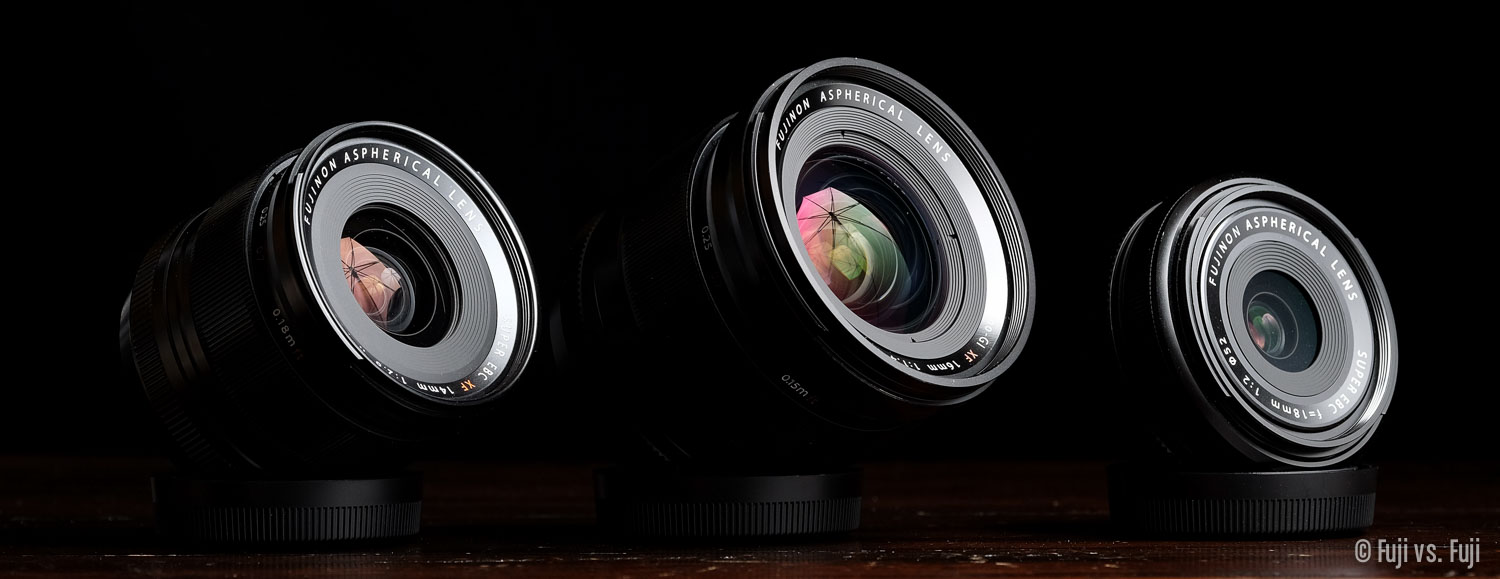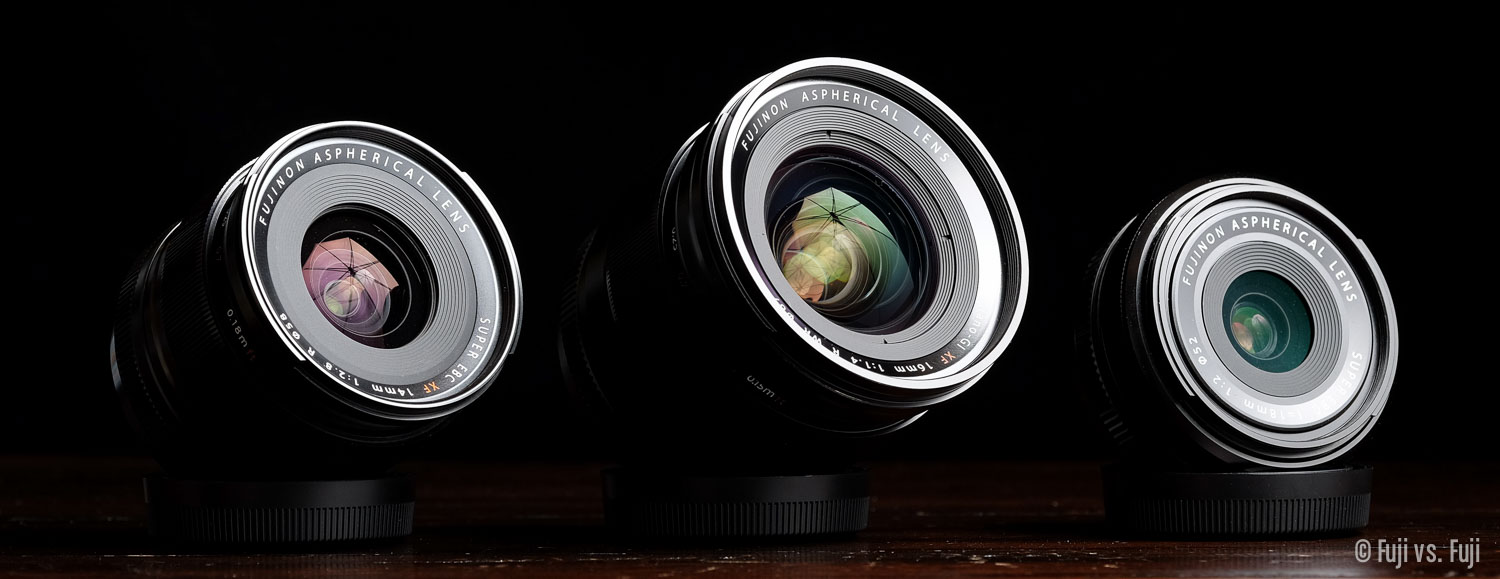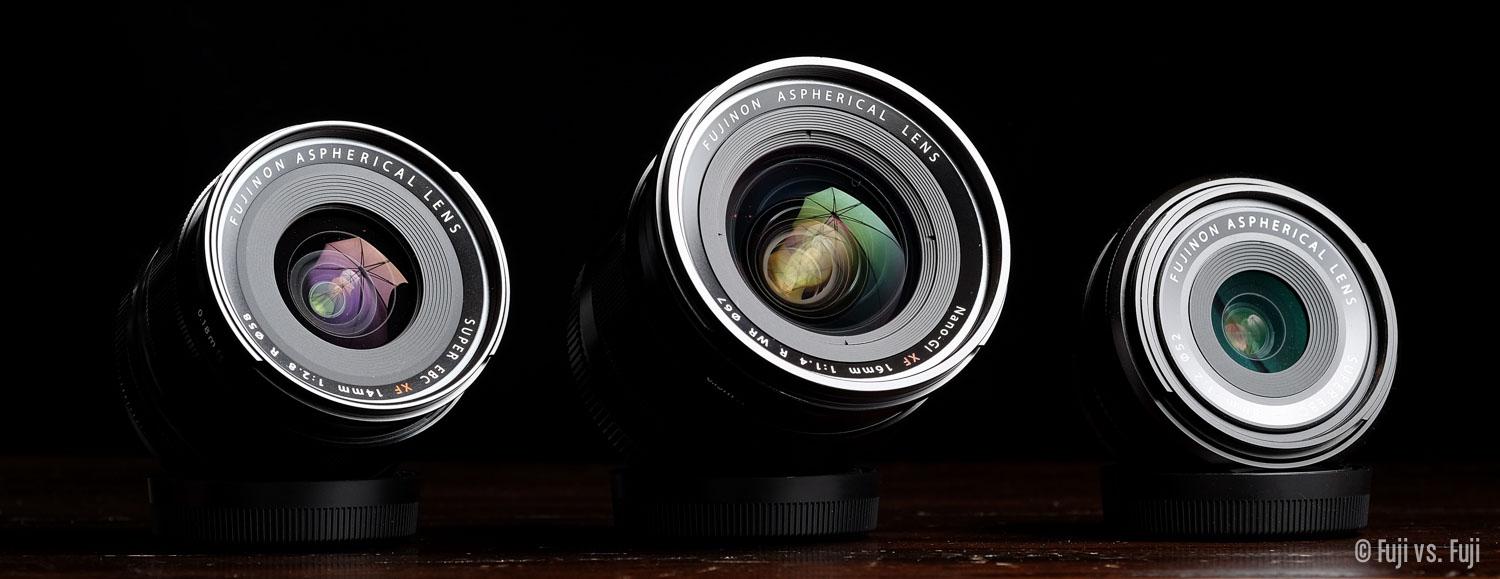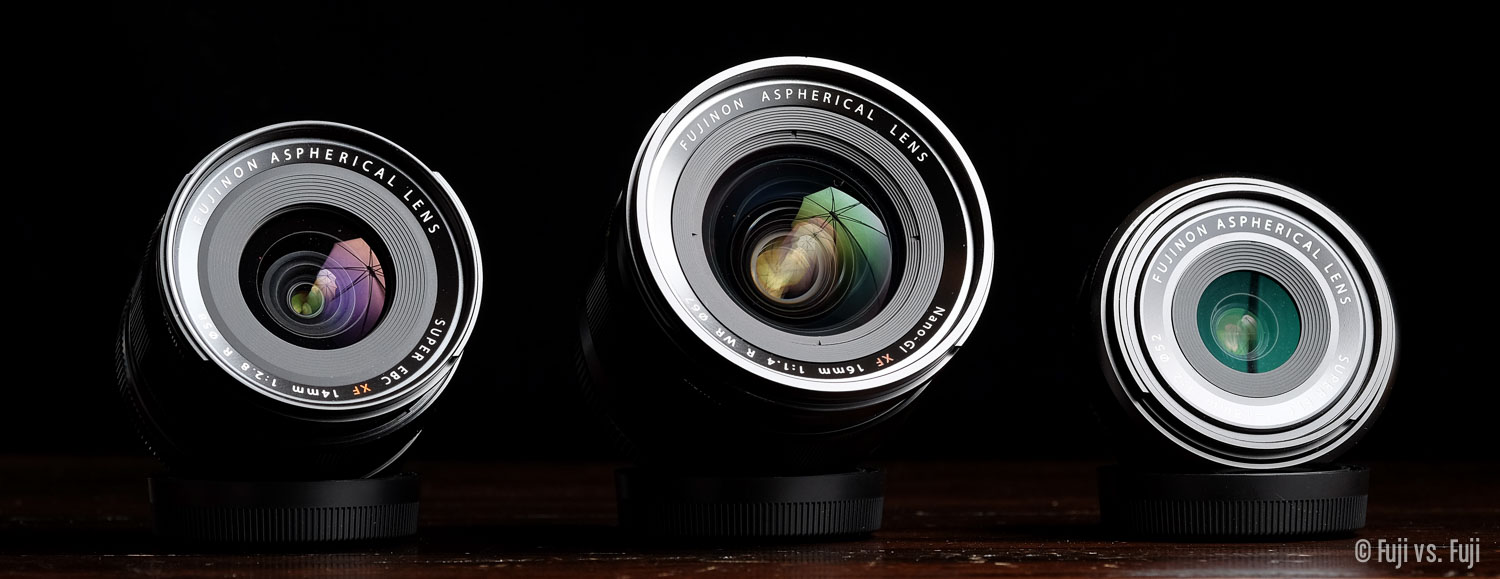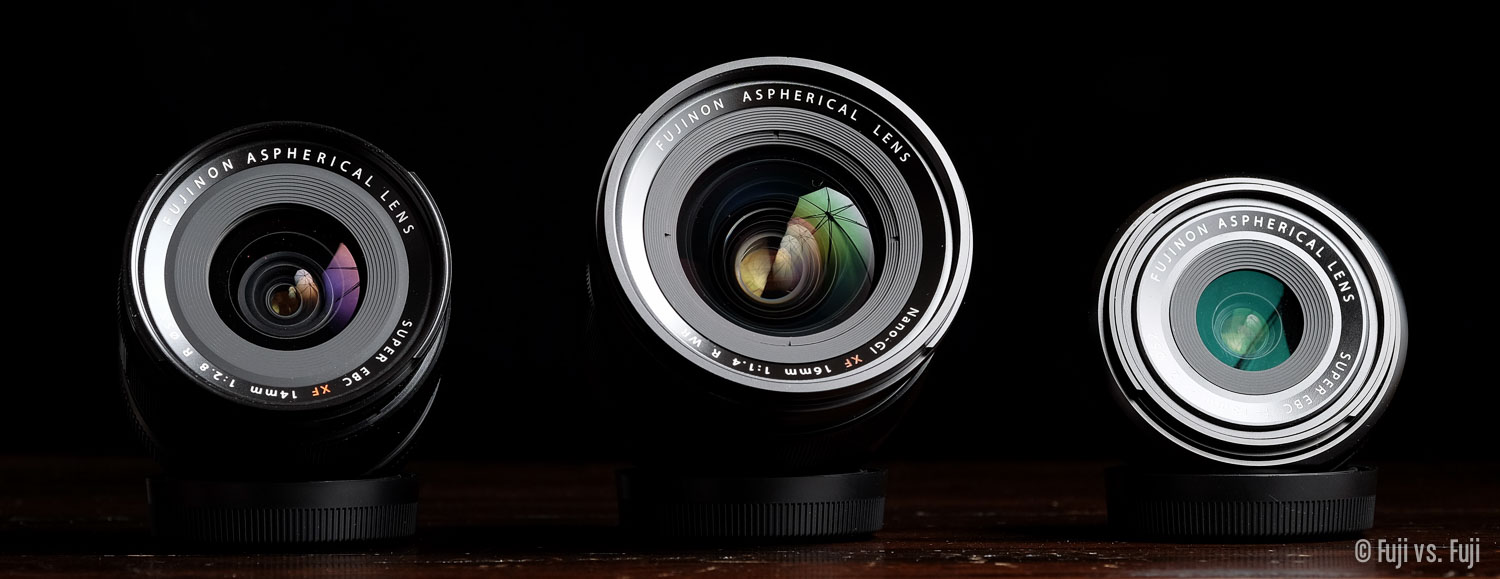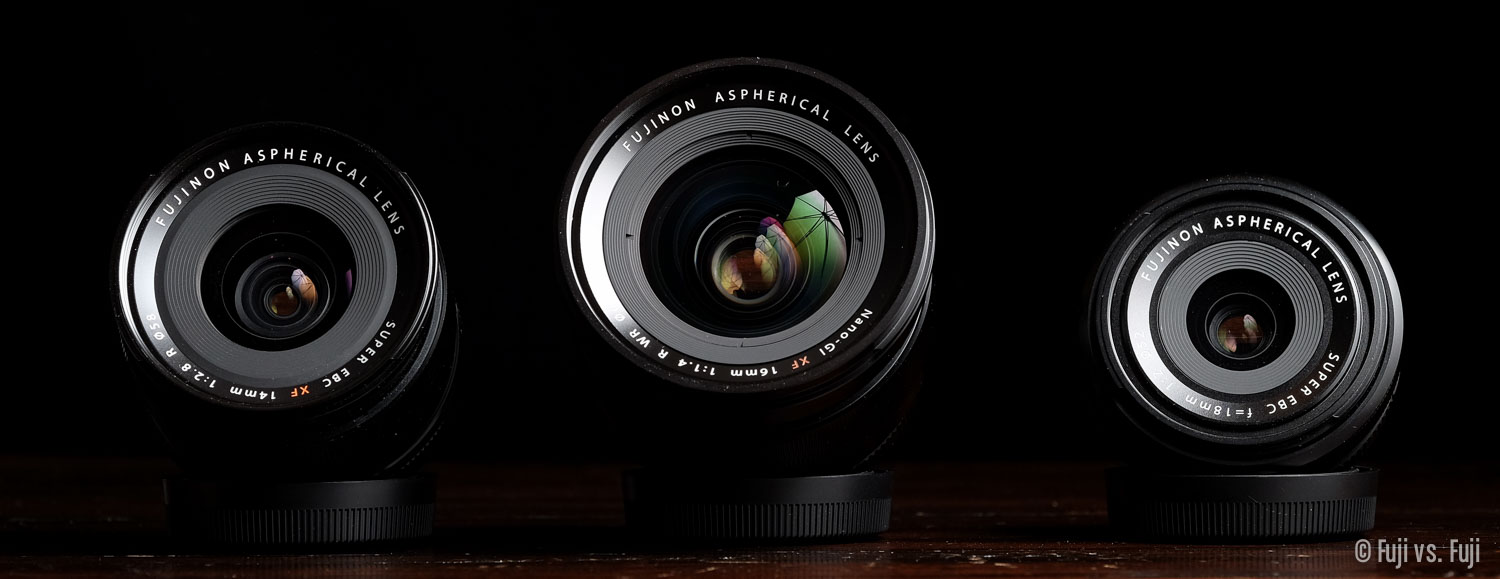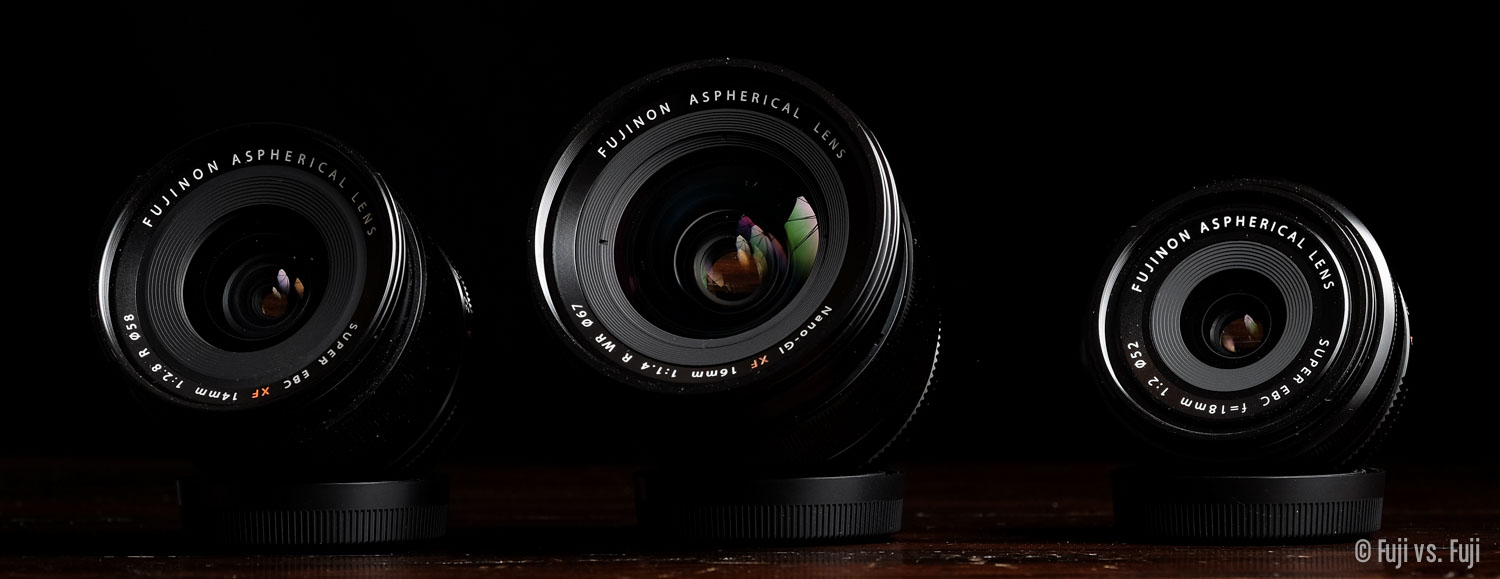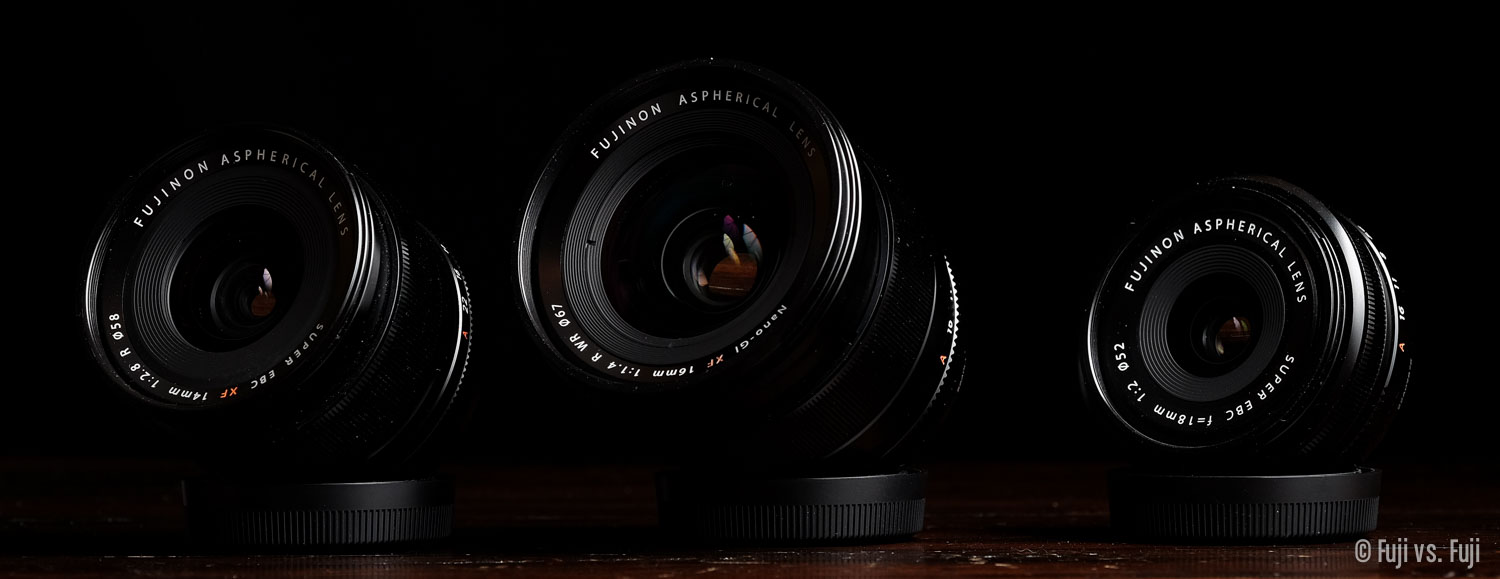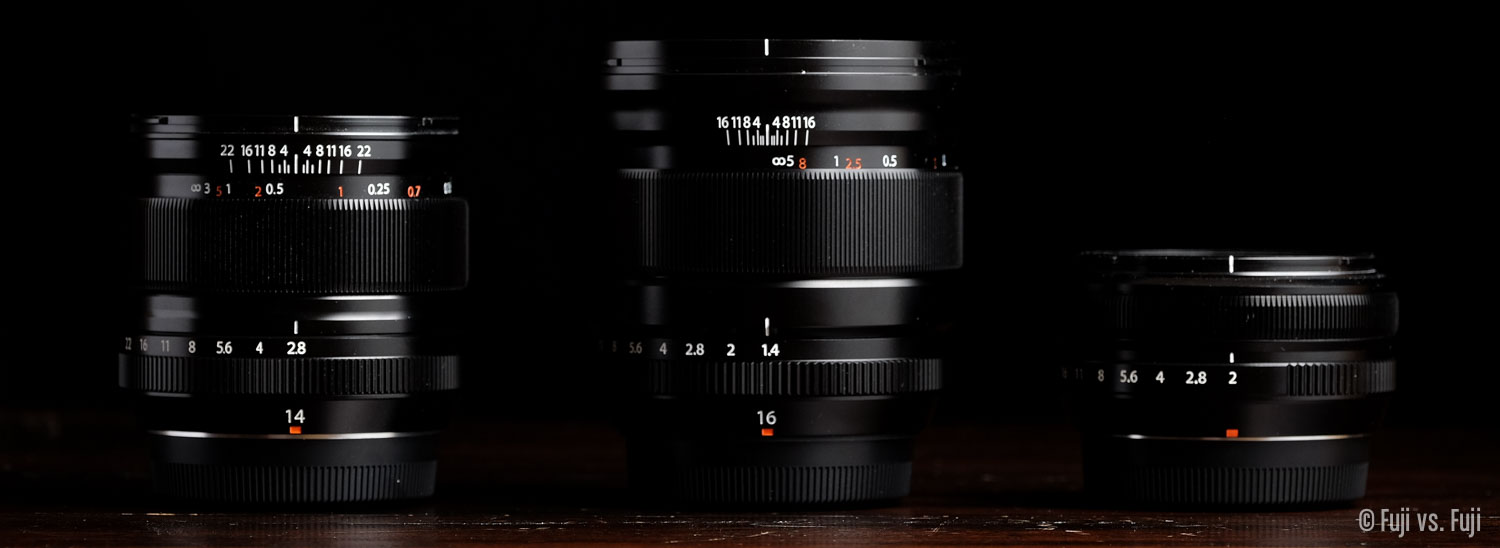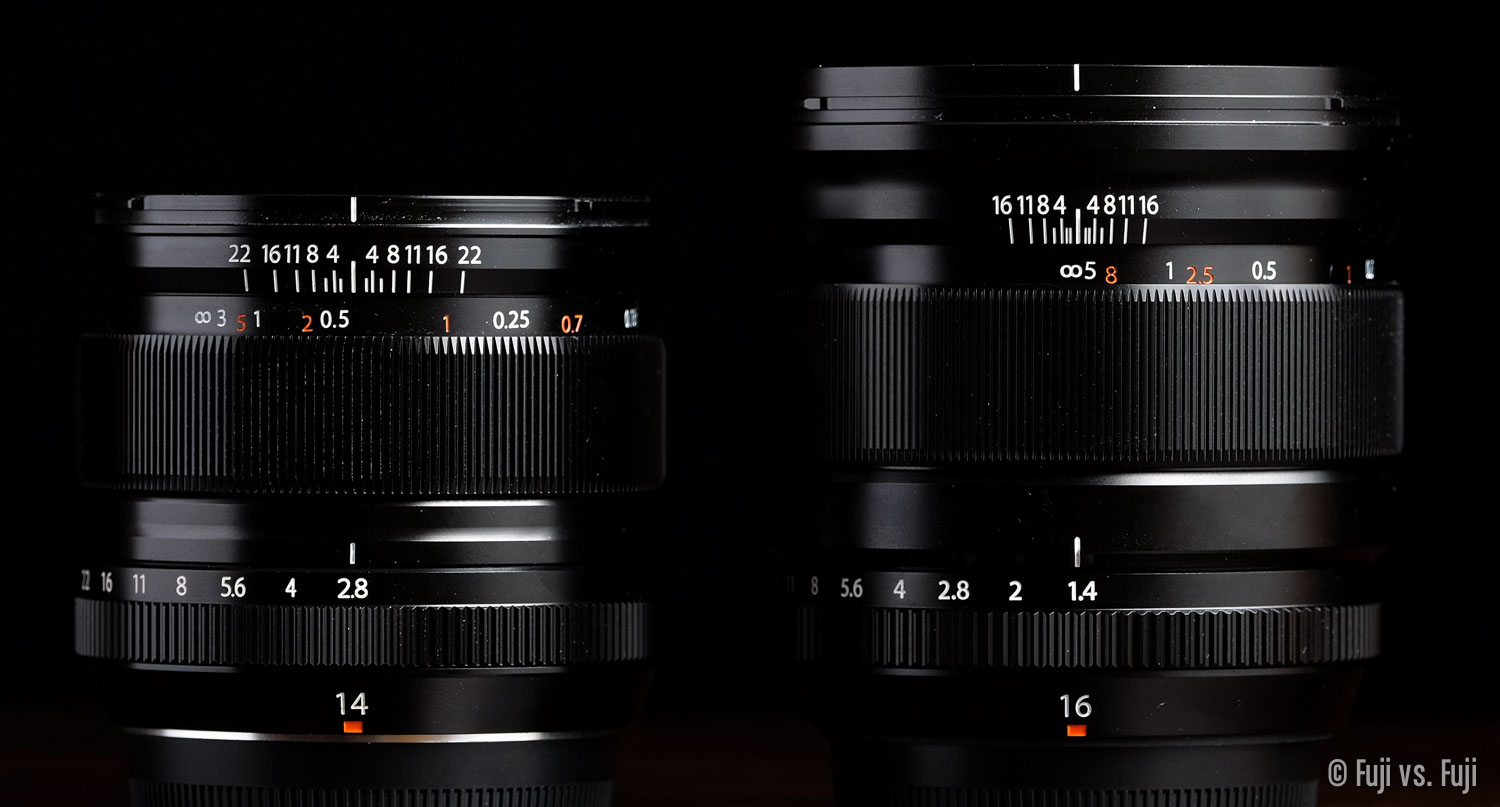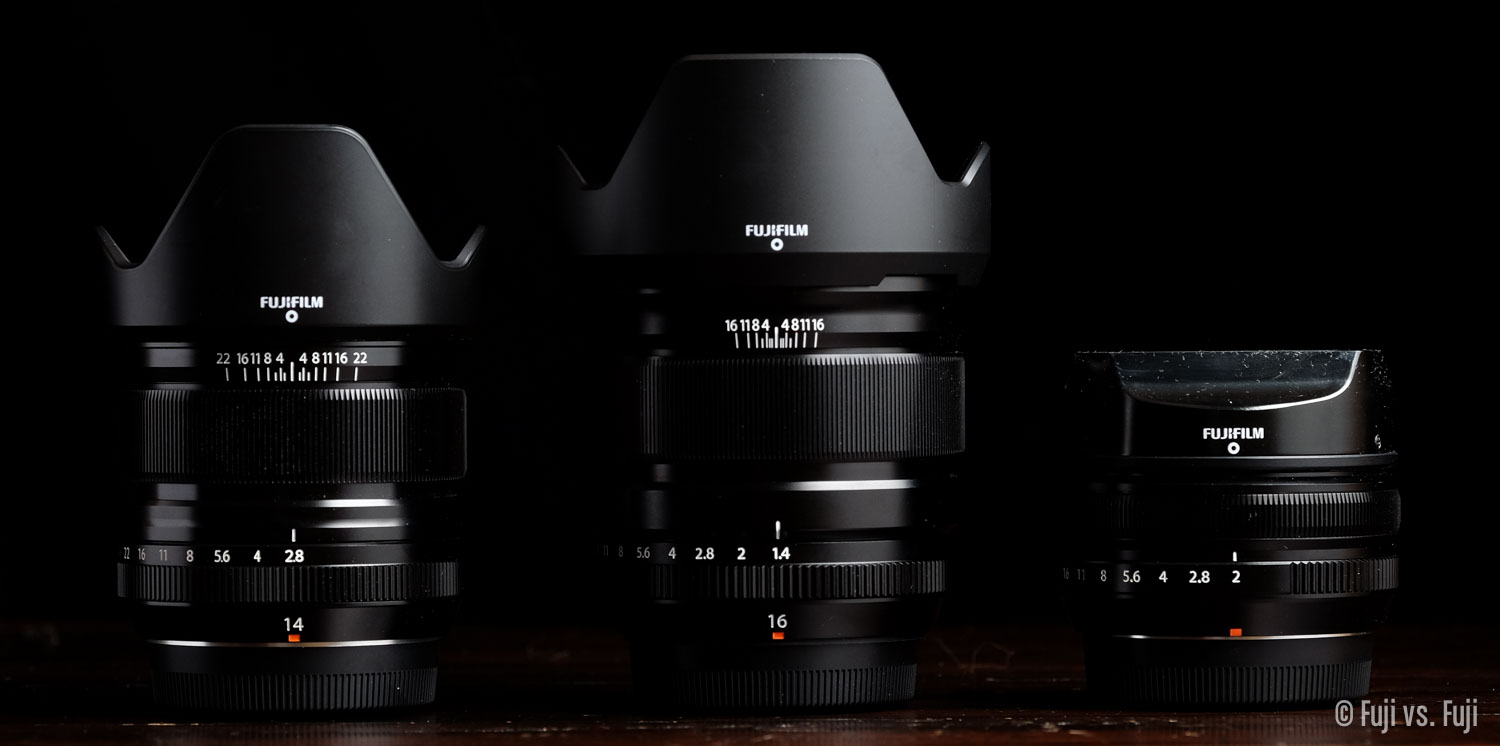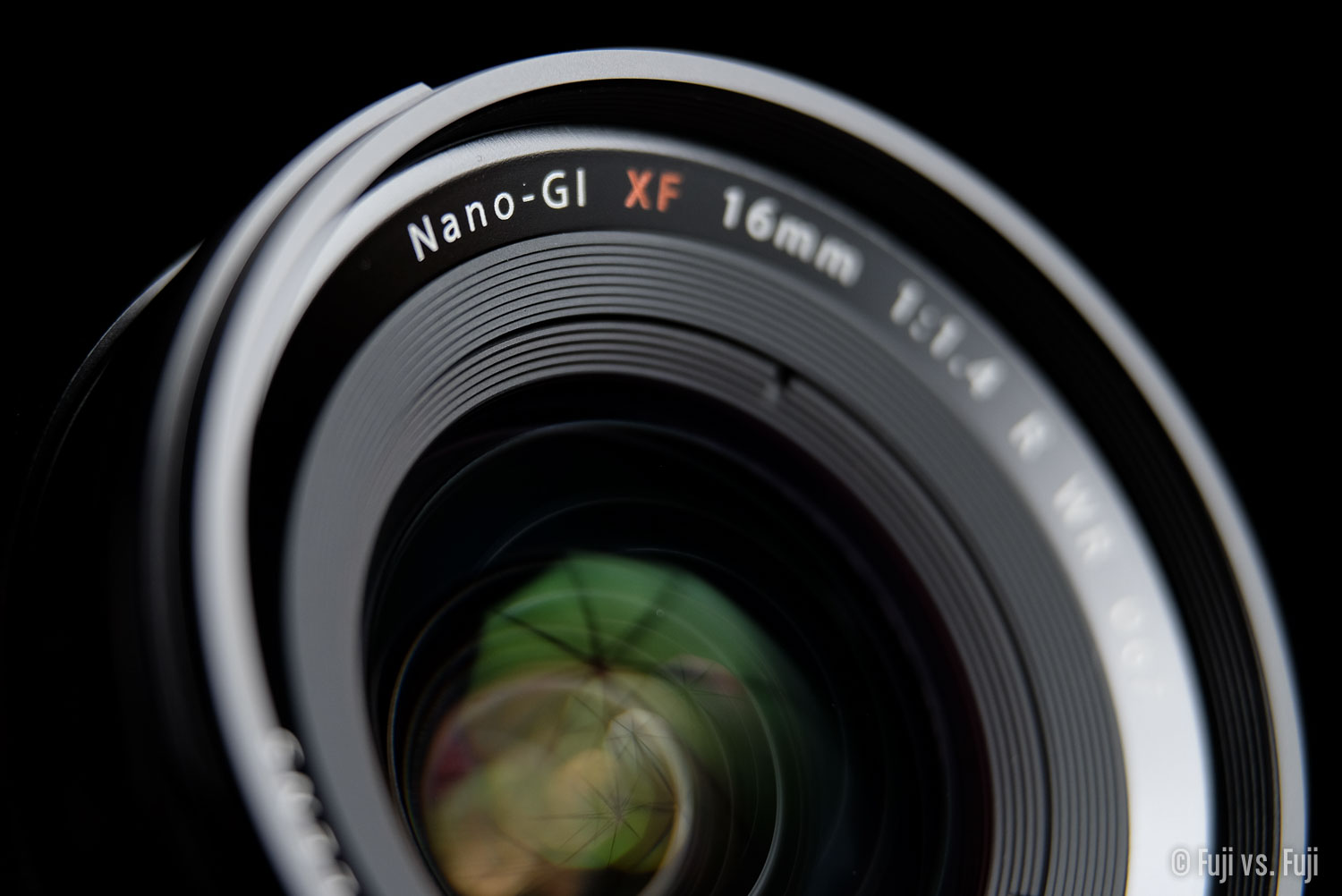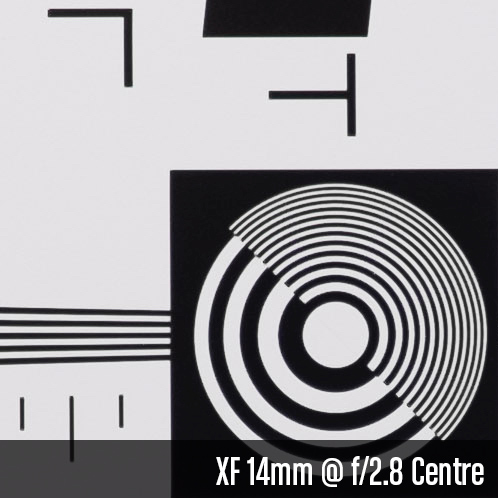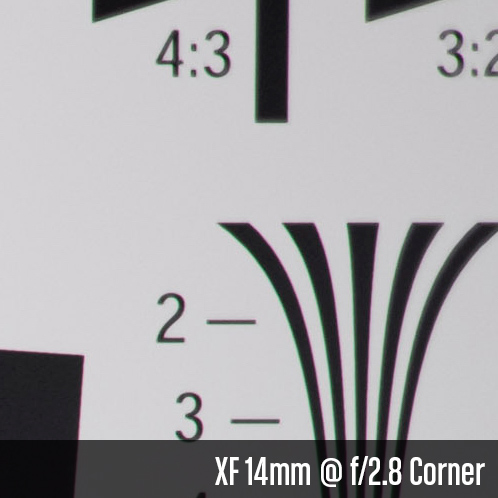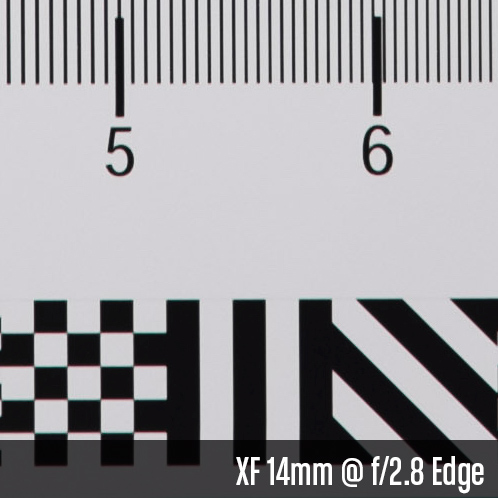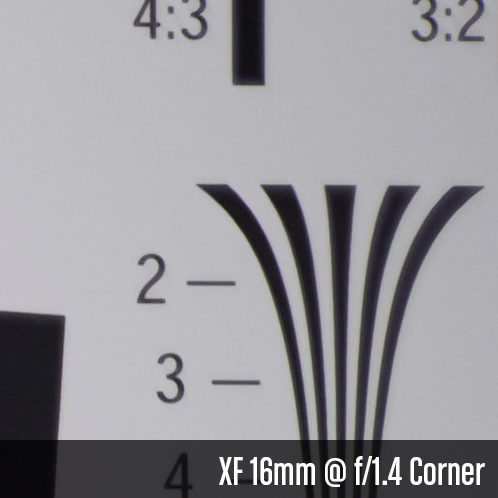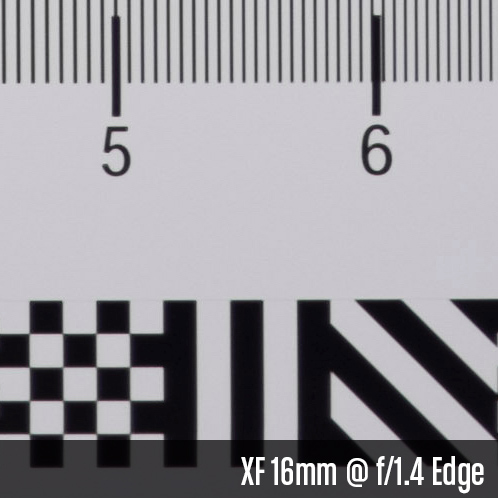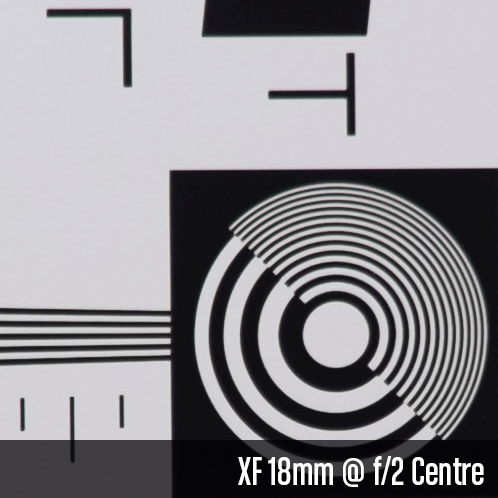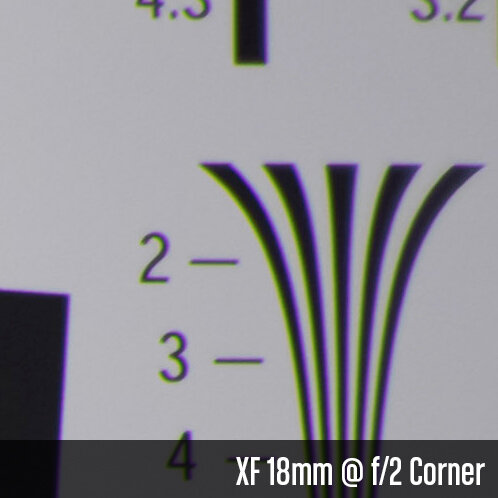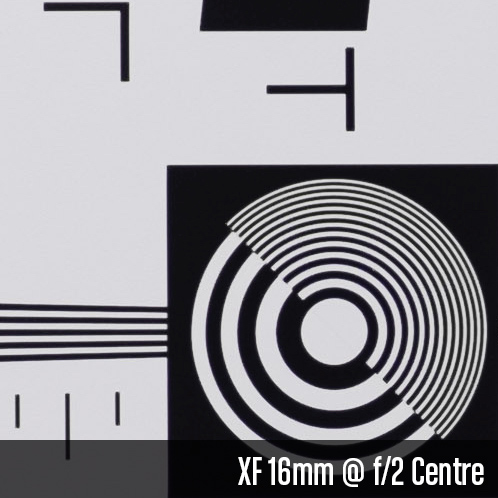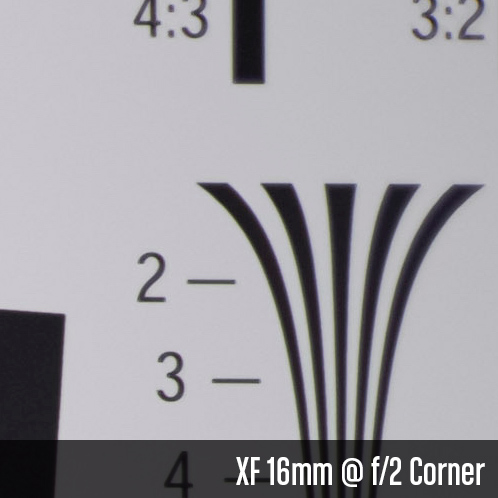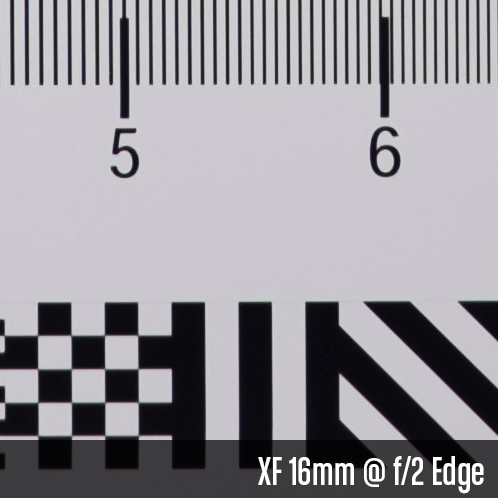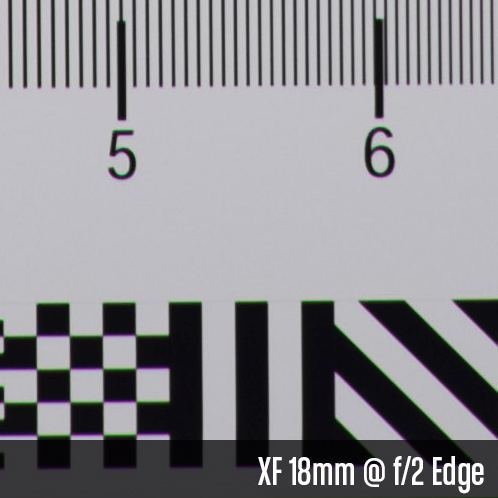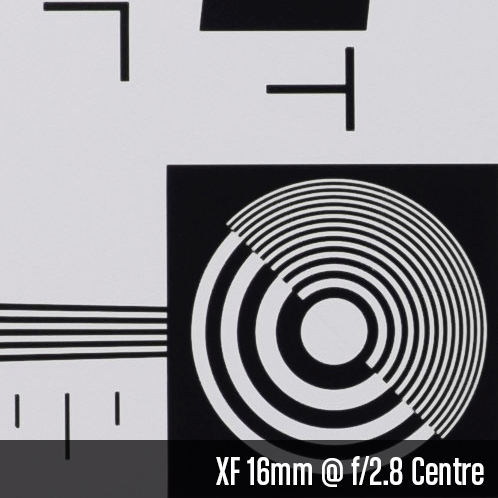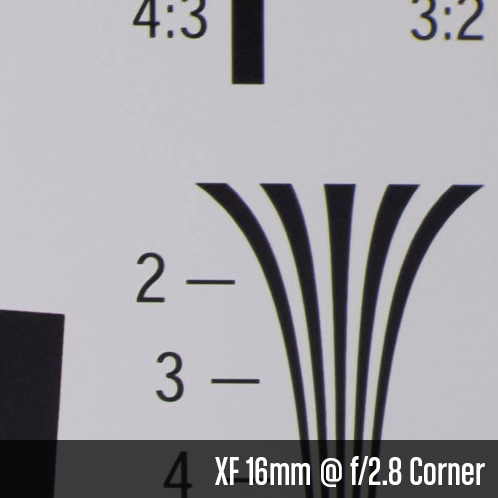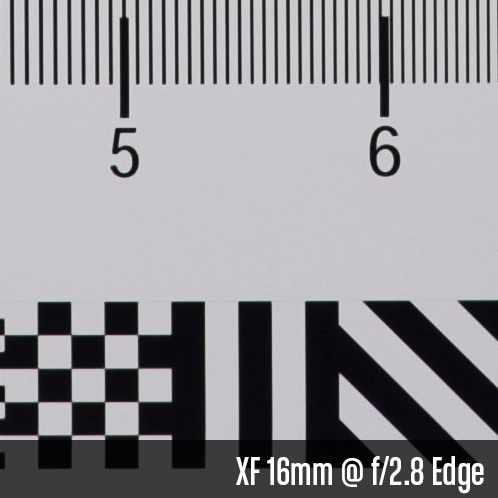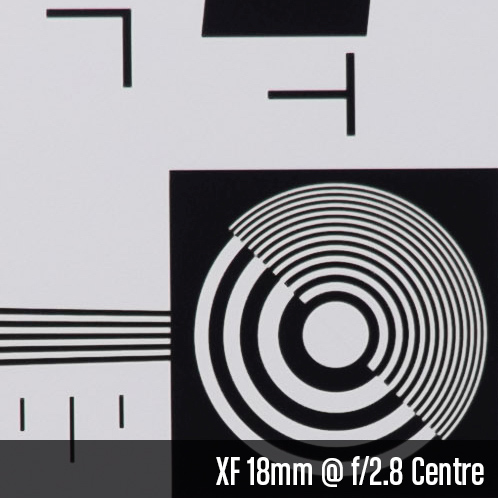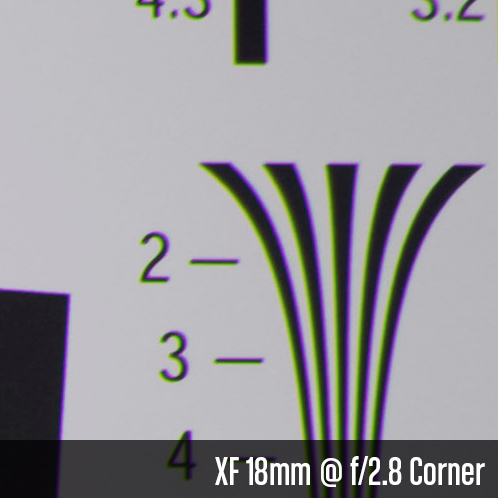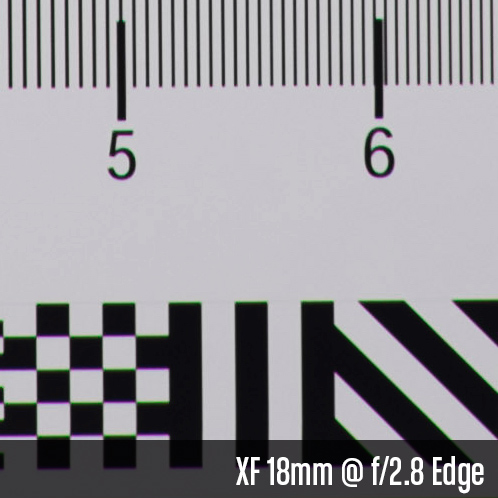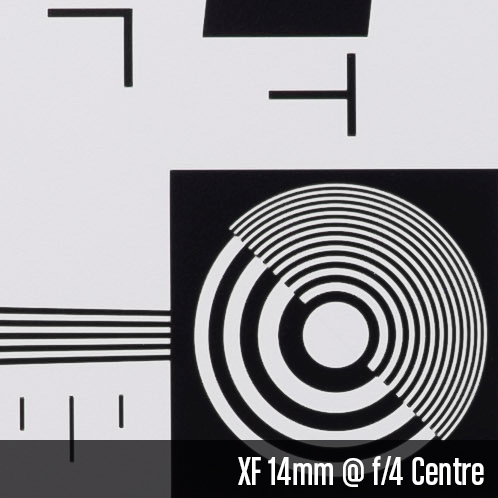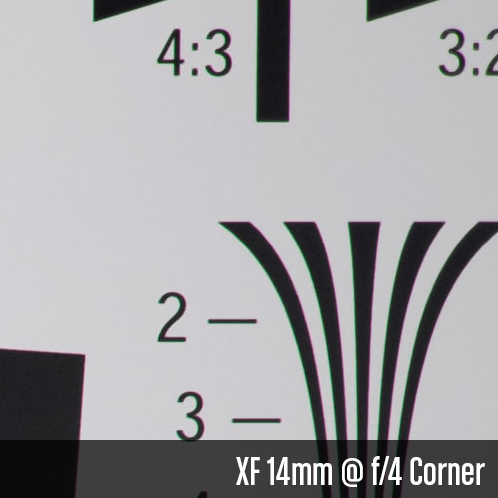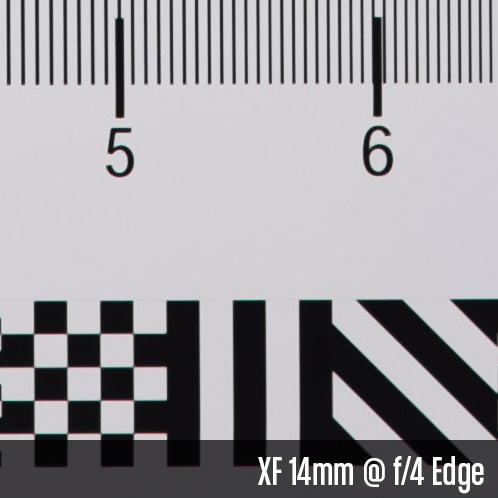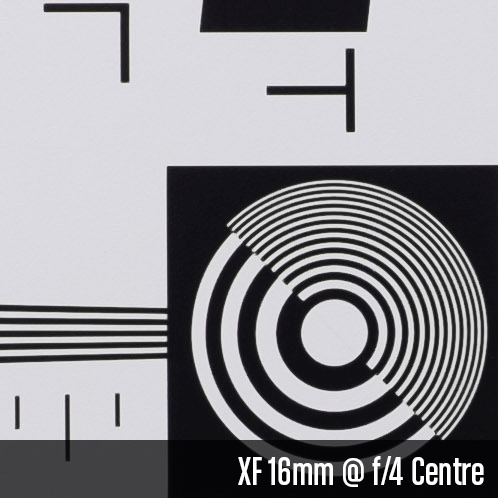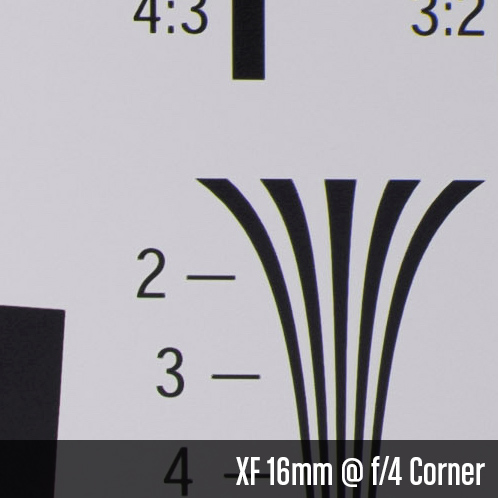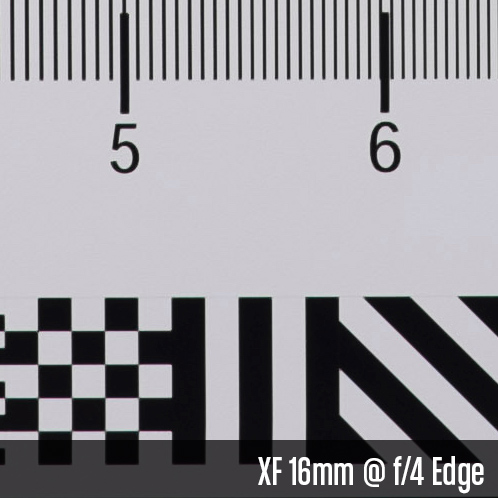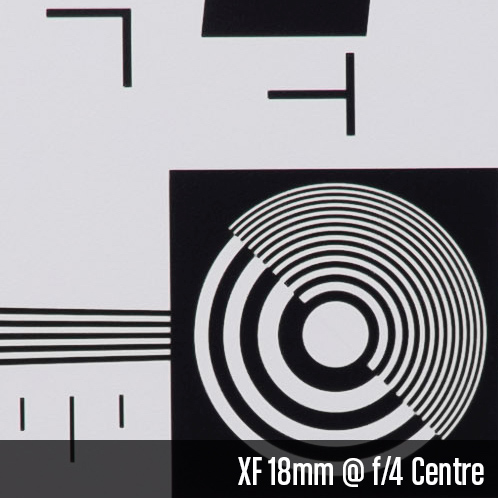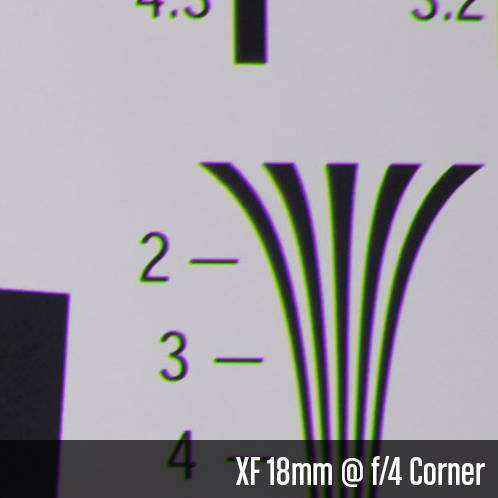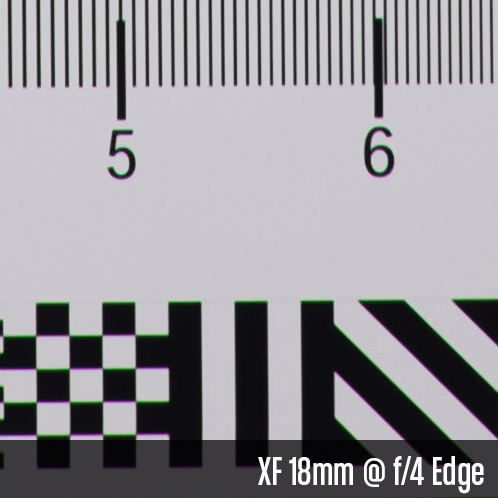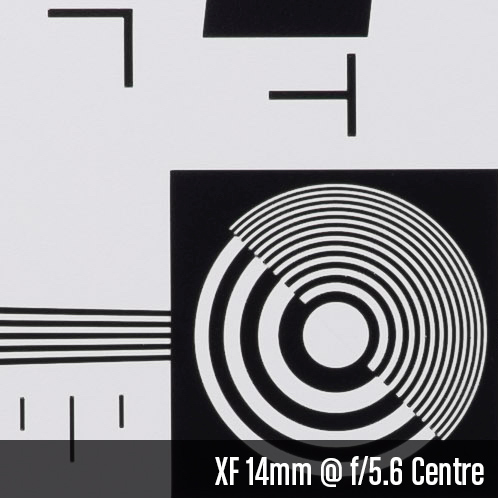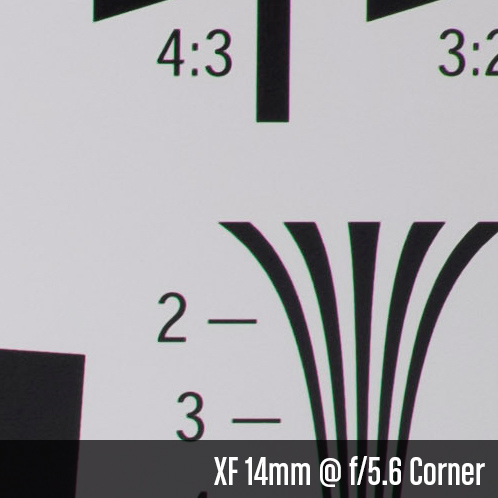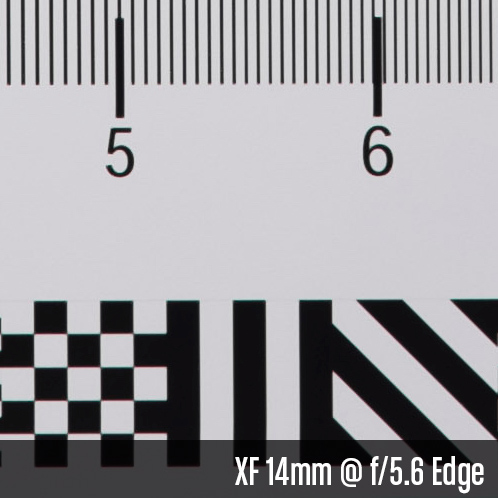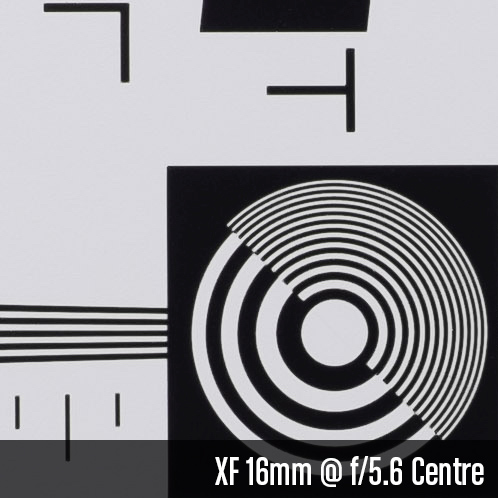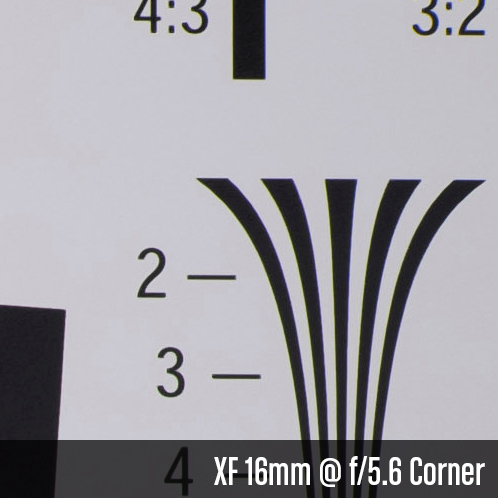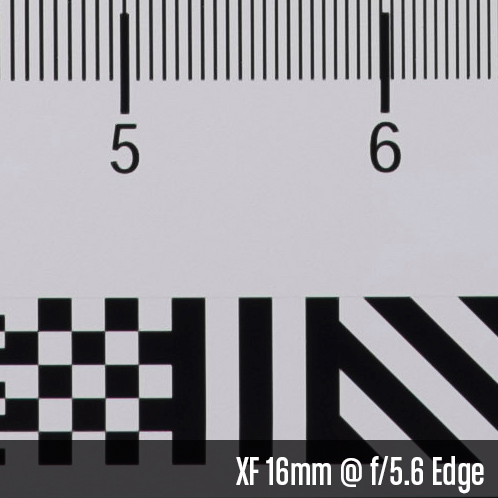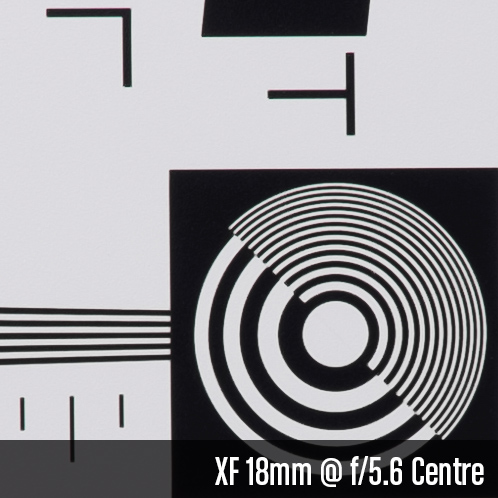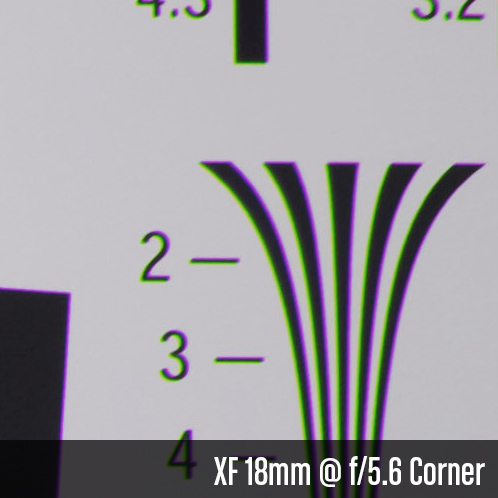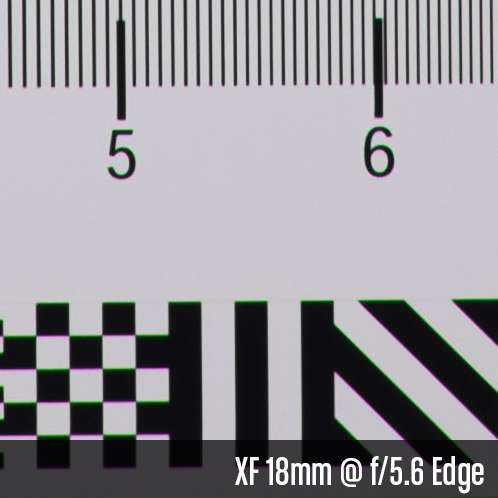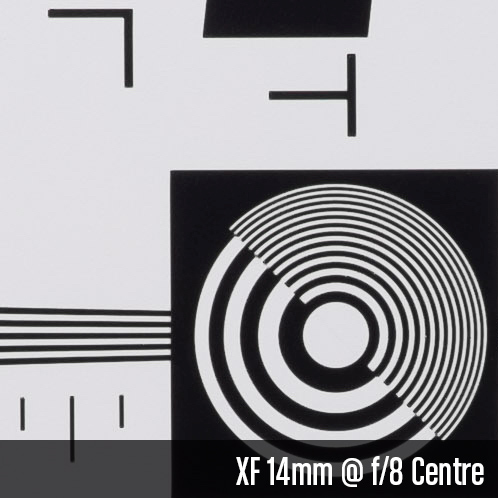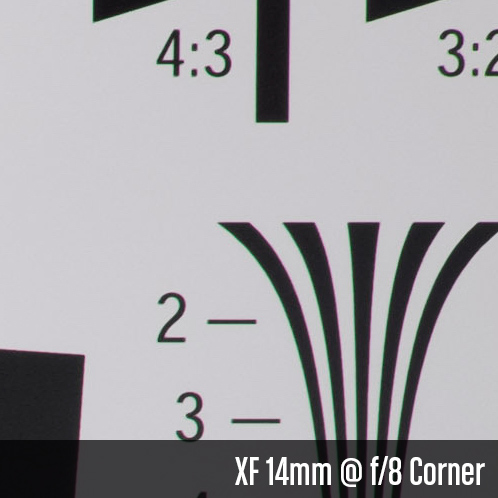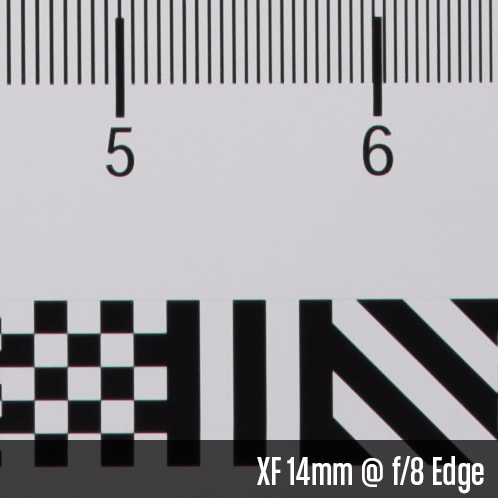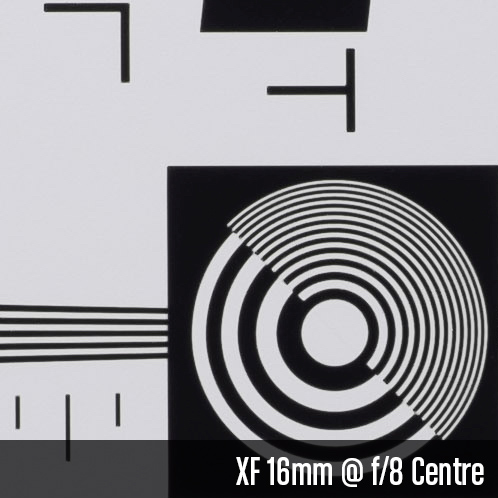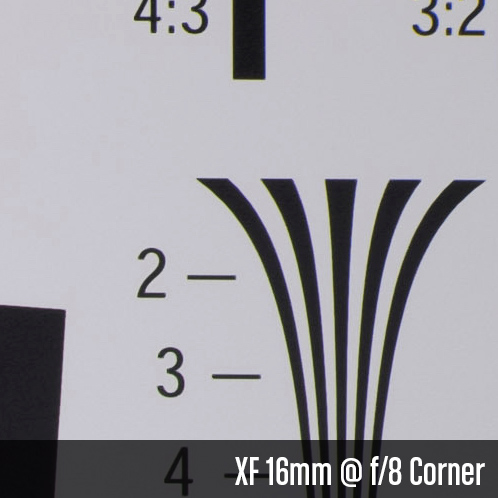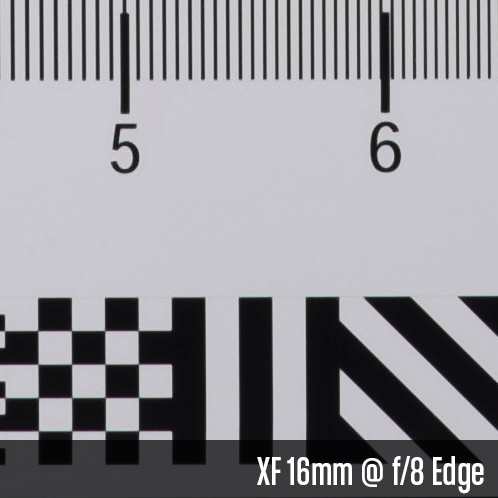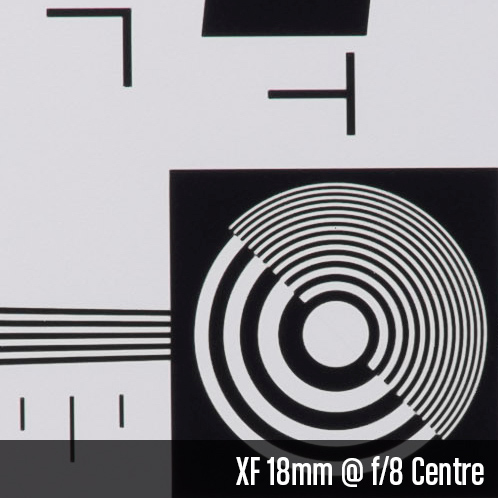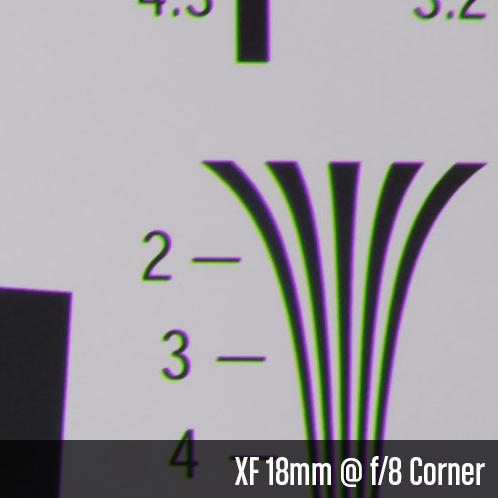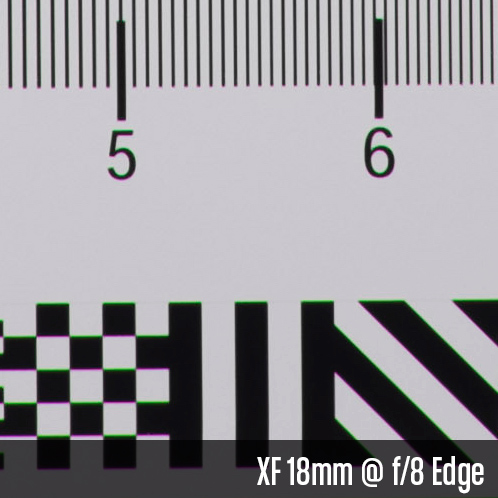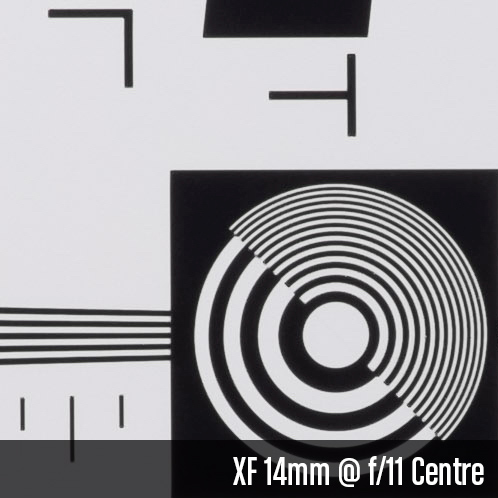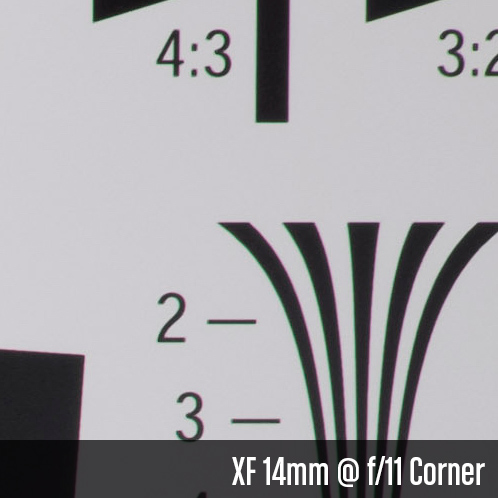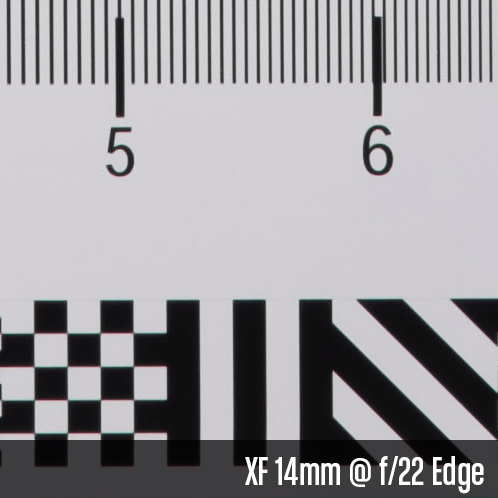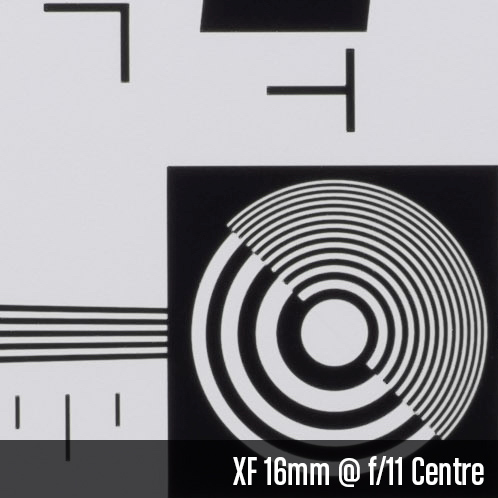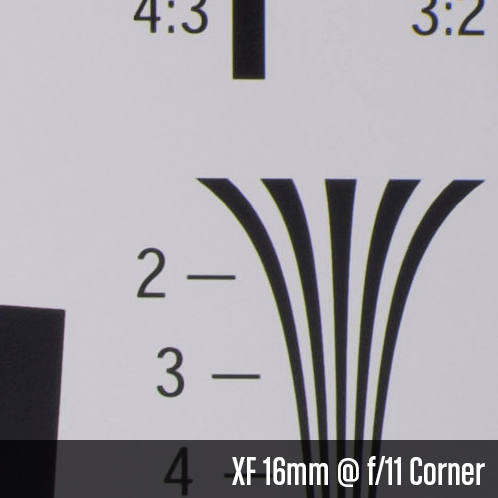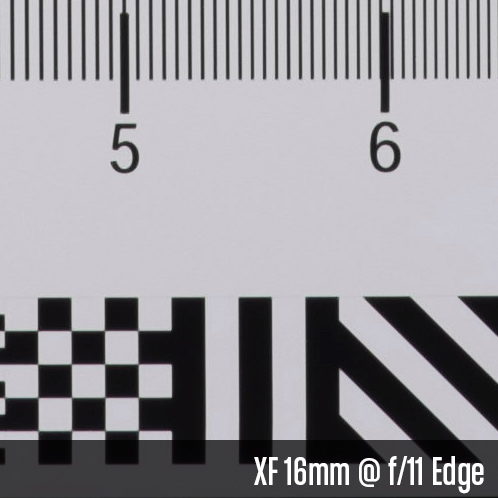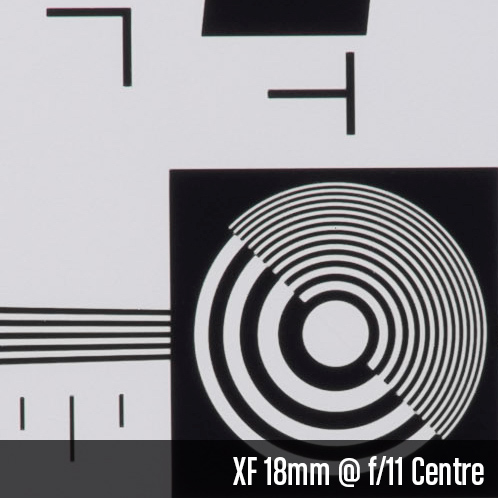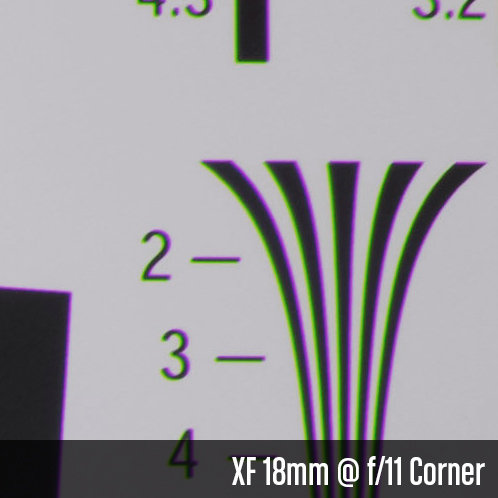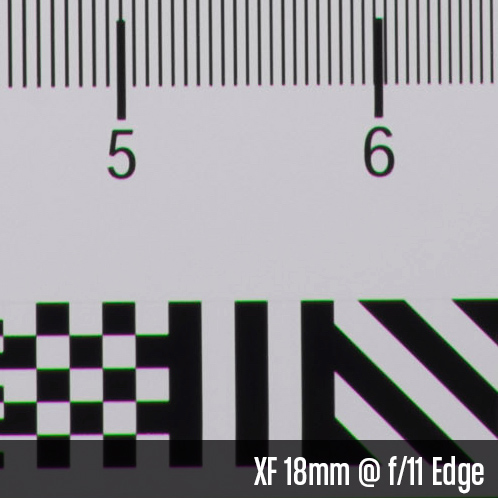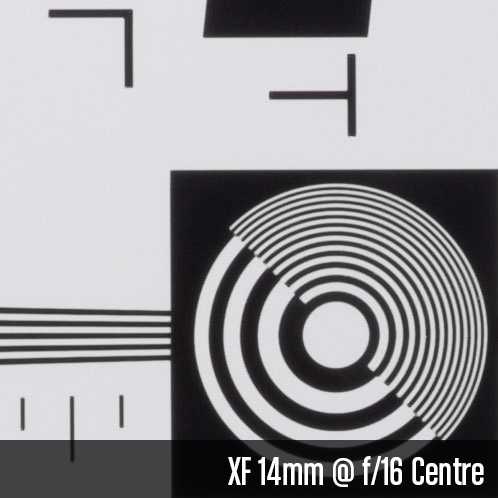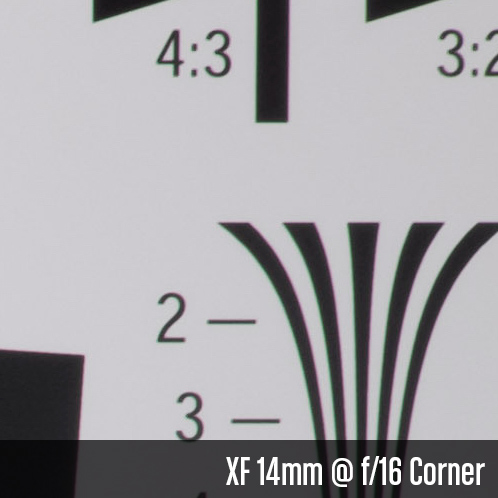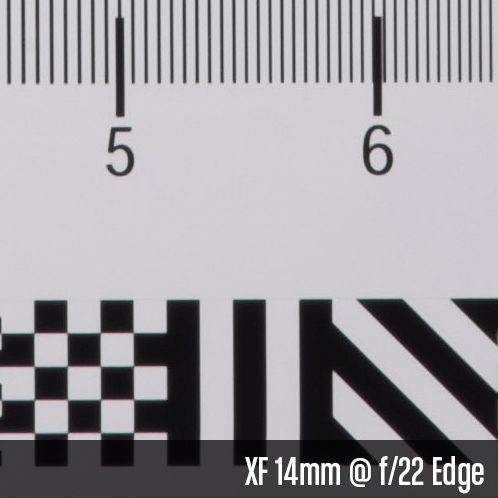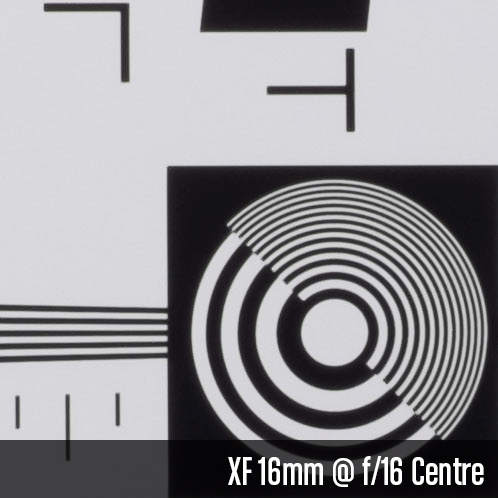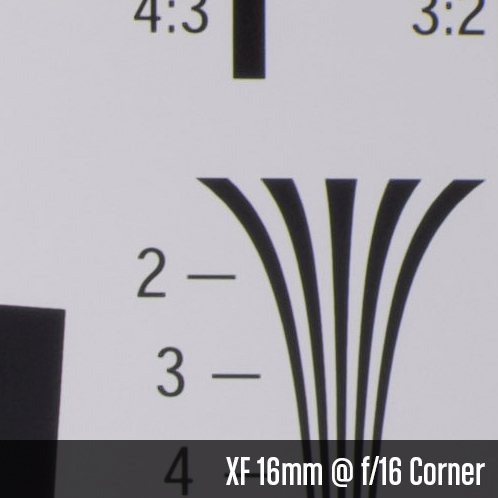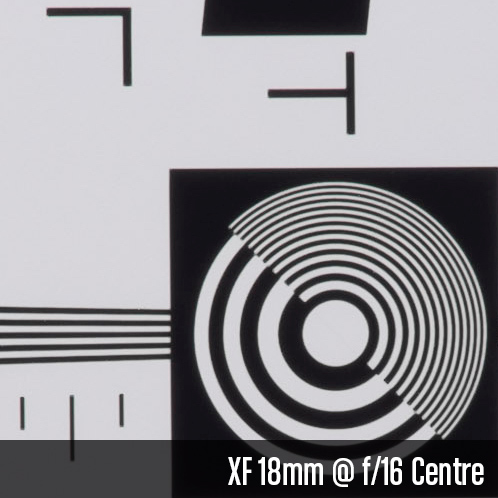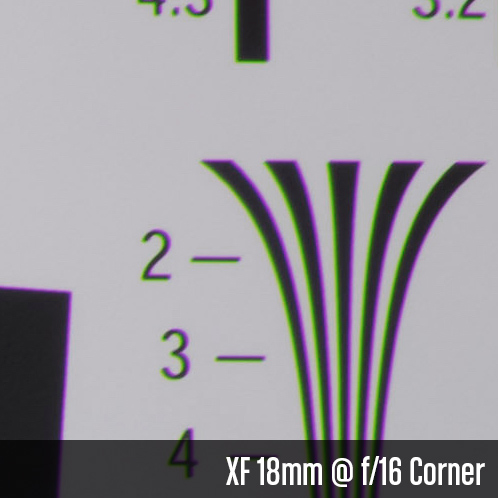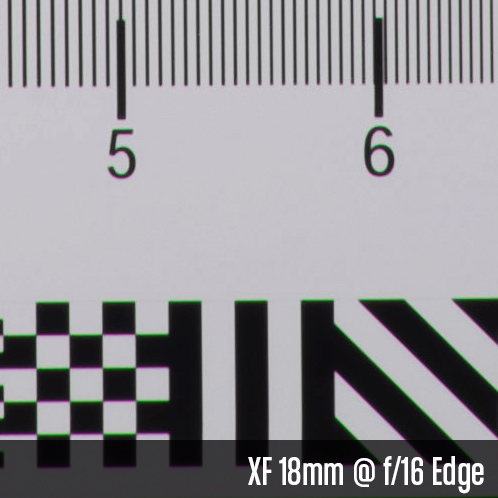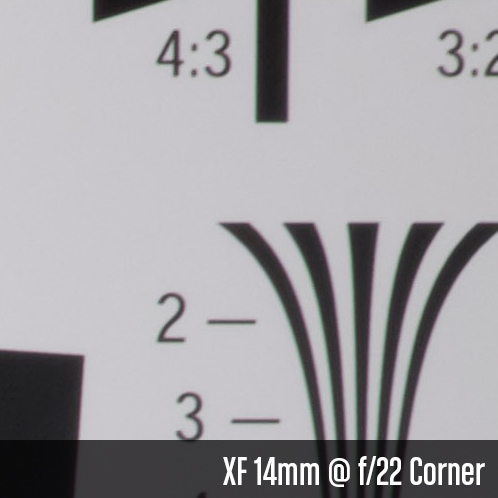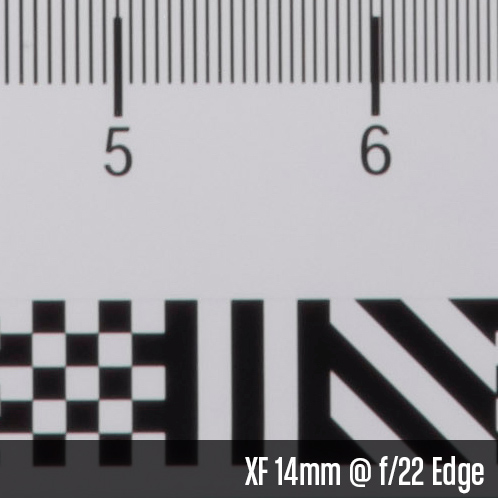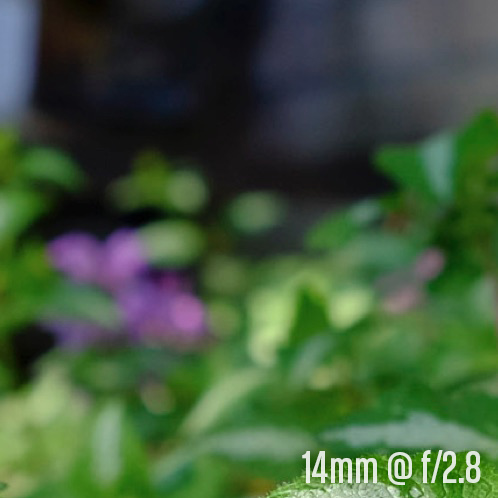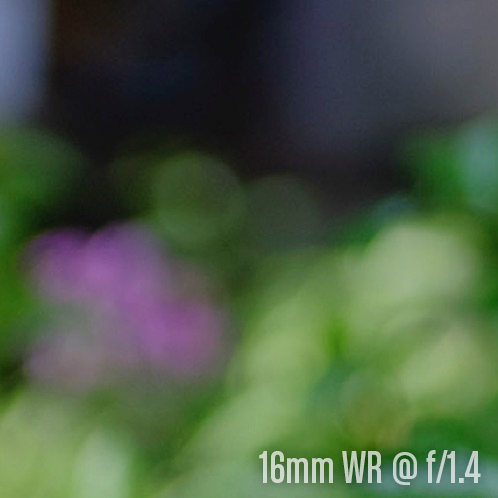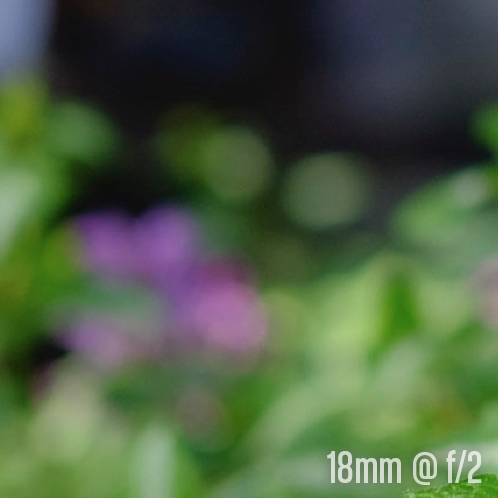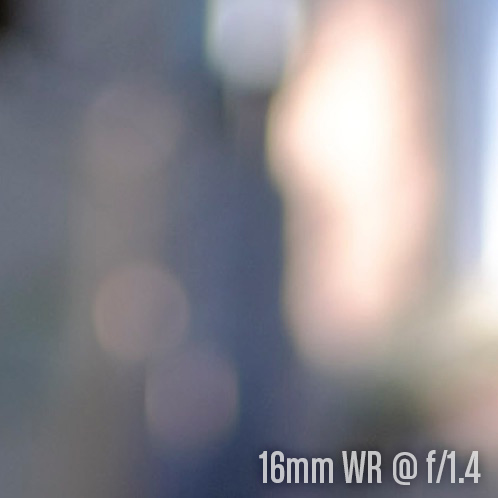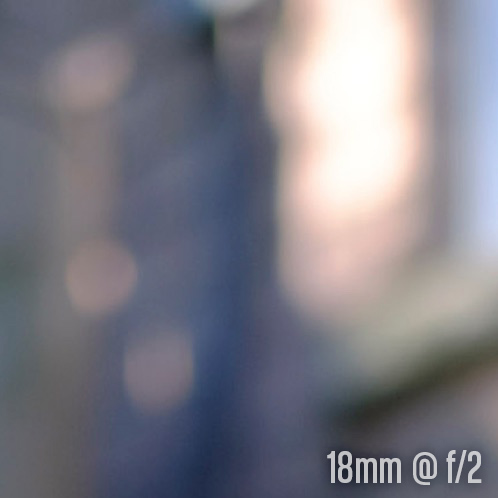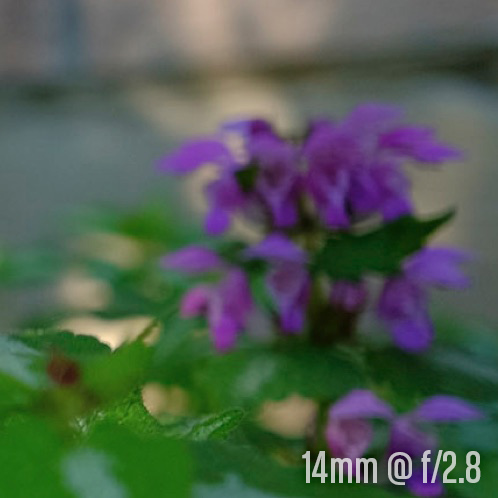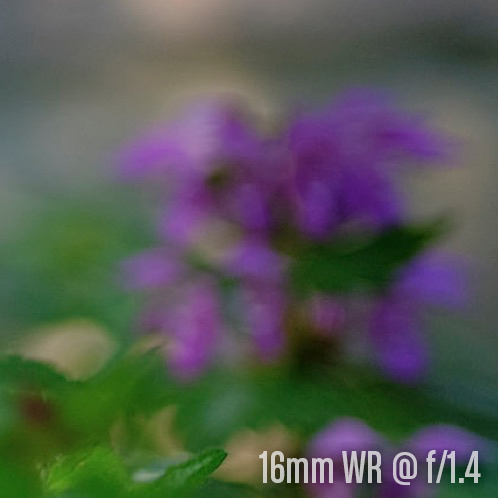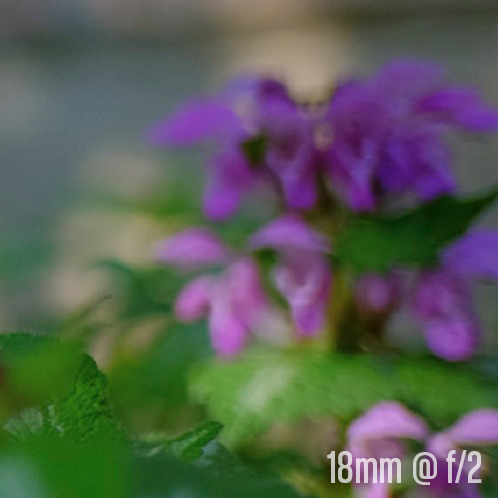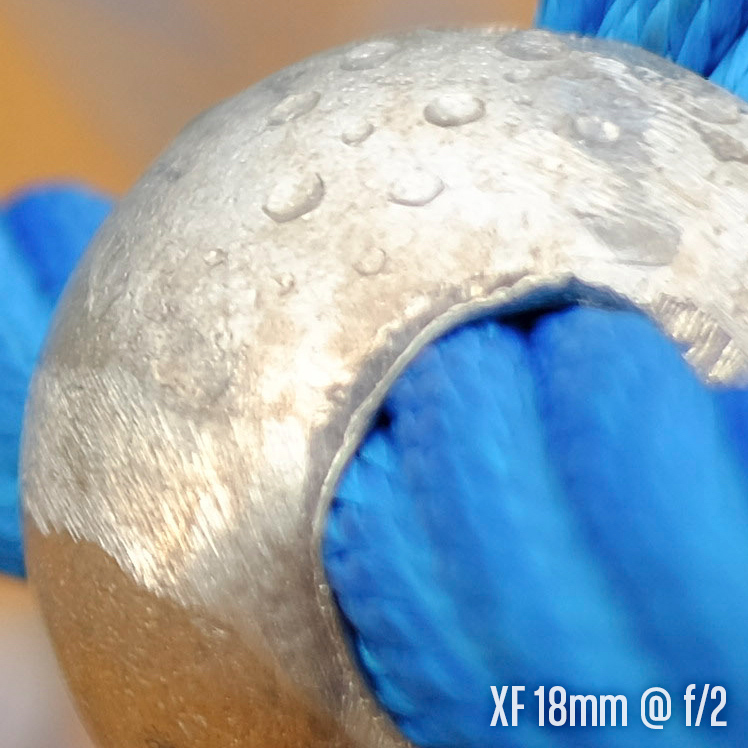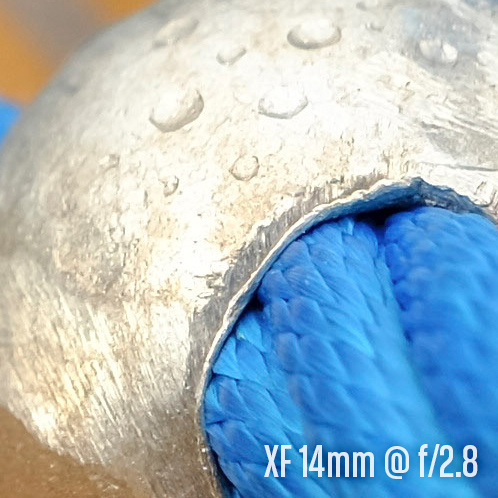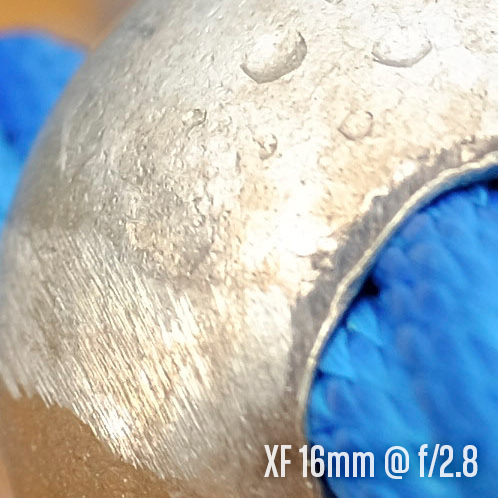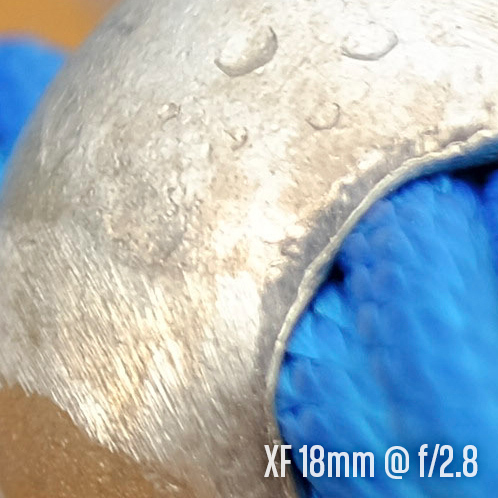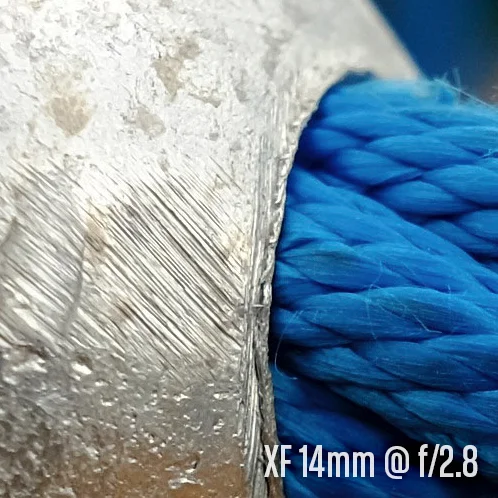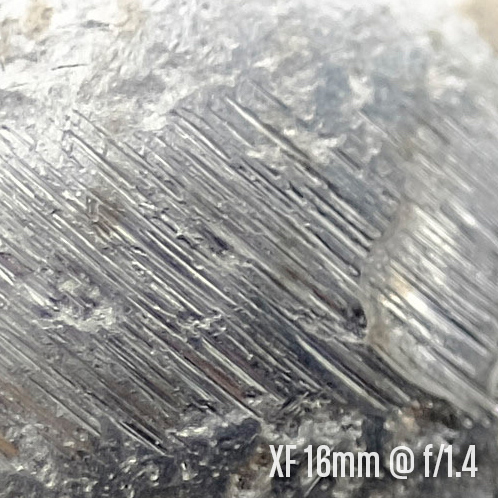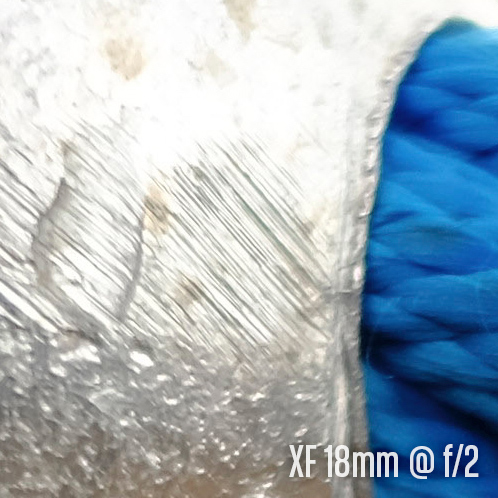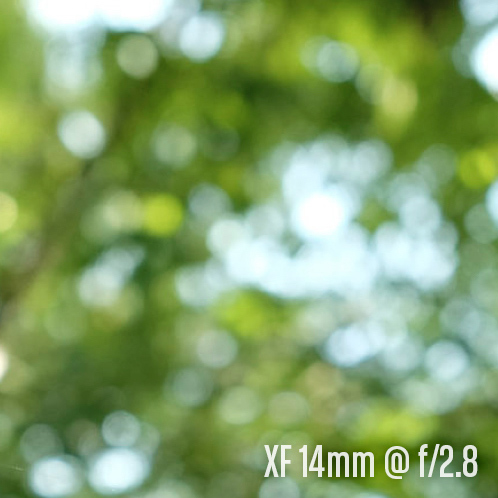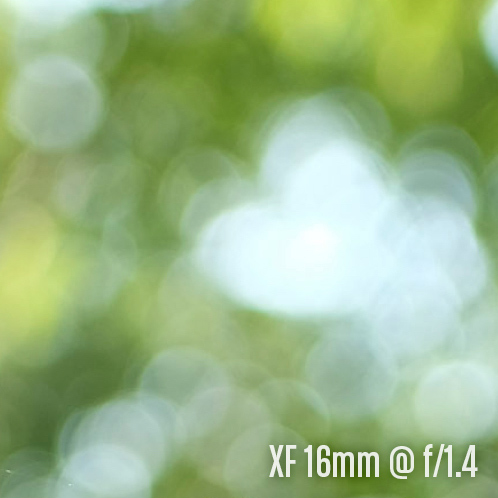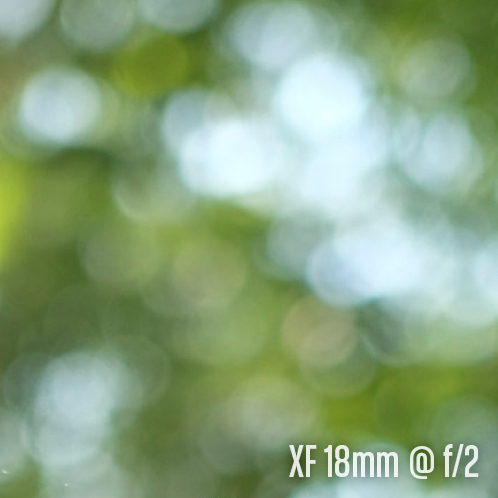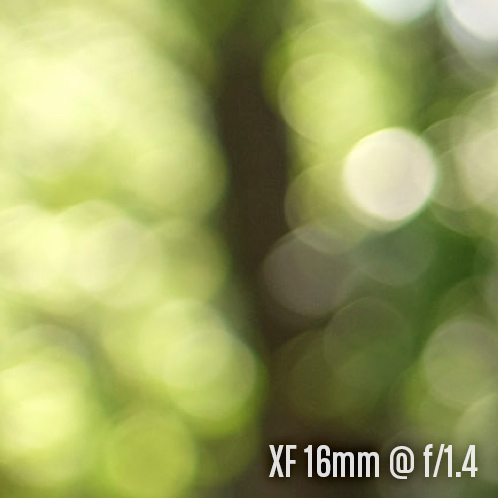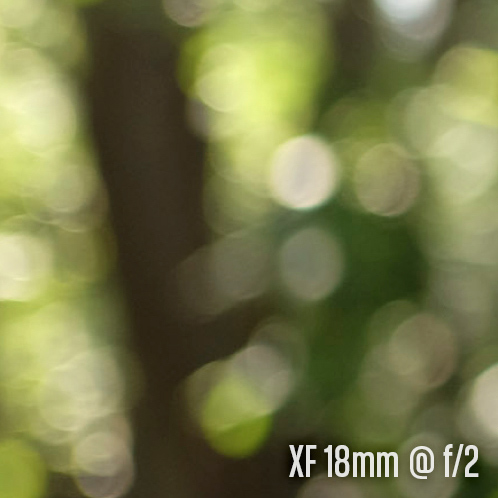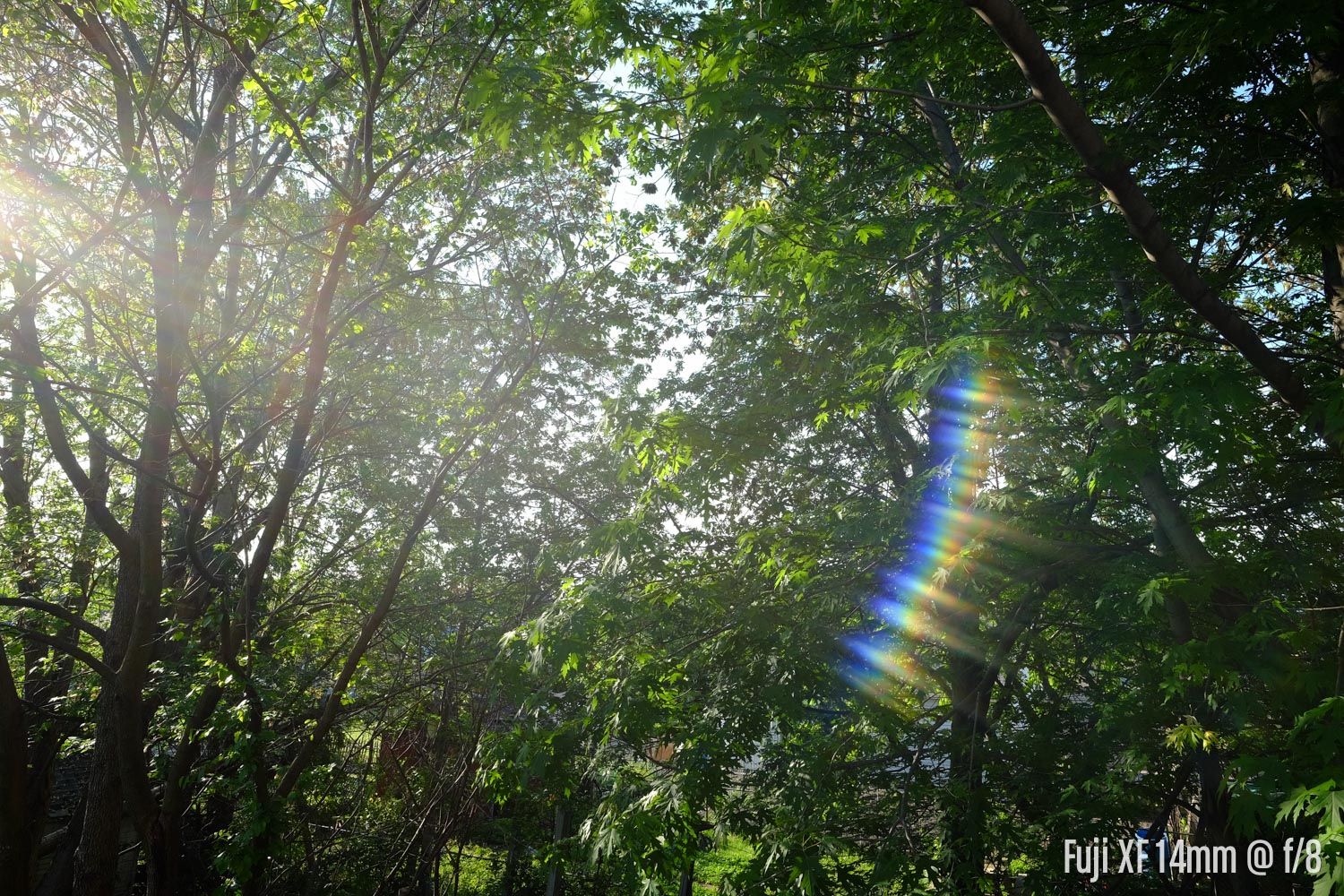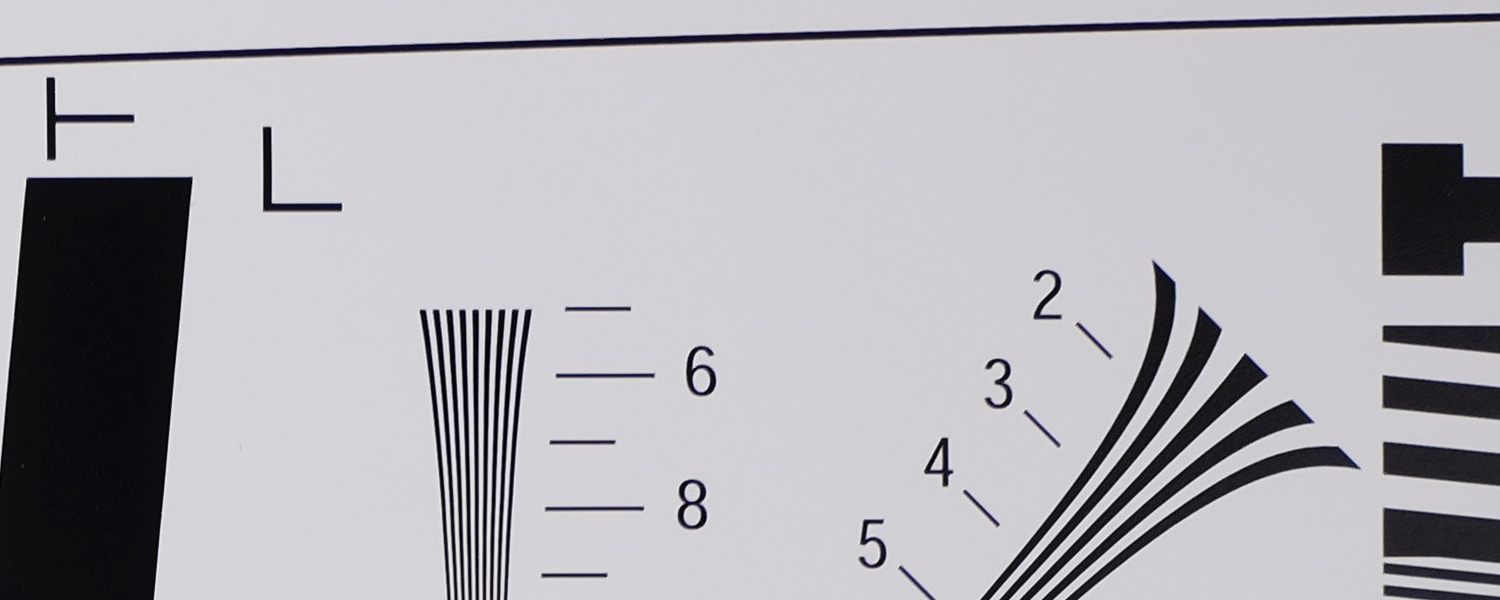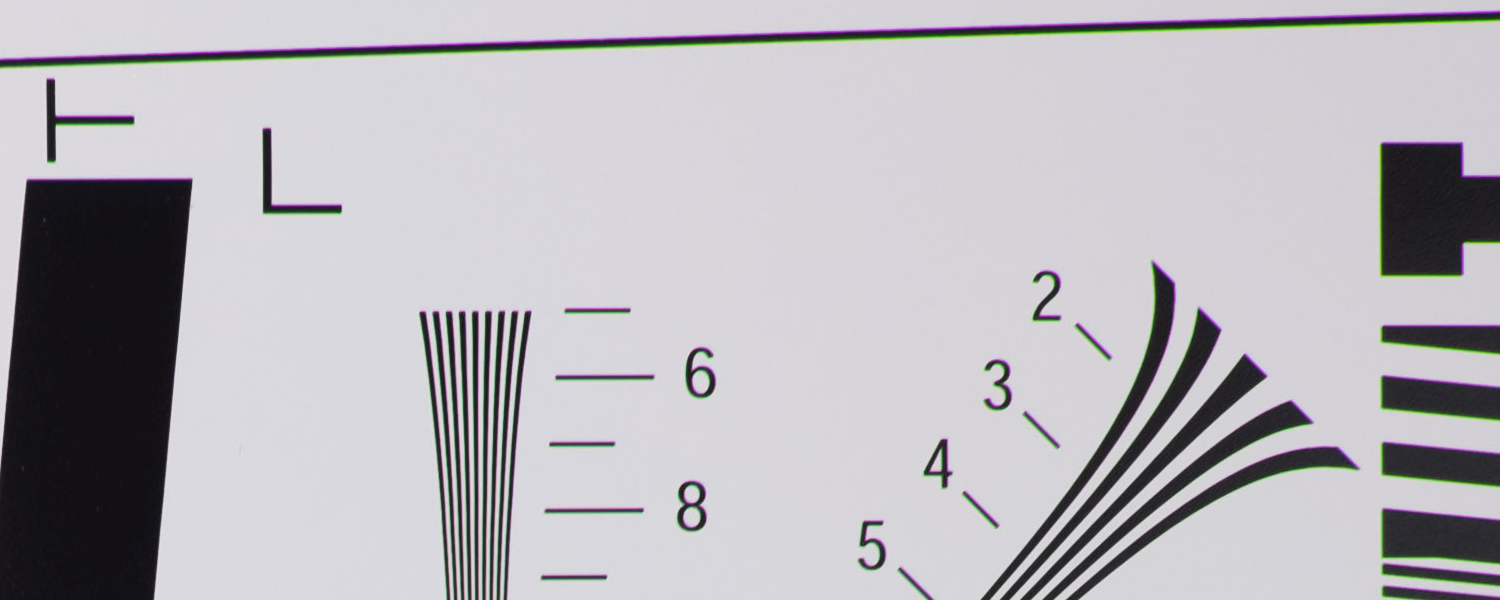Fujifilm XF 14mm F2.8 vs. XF 16mm F1.4 WR vs. XF 18mm F2, a detailed comparison of Fuji’s wide angle primes.
June, 2015: Originally published
June, 2020: Updated and revised
Introduction
For the first few years of X-mount, it was relatively easy to decide between Fuji’s wide angle prime offerings. There was the really wide, full(er)-featured, king of landscapes, the XF 14mm F2.8 (Review), or the smaller, faster, lighter, more portrait and street-focused XF 18mm F2 (Review). There was enough of a variance in focal length to make choosing simple, or owning both perfectly viable.
Fuji threw a large wrench into the purchase decision with the release of the XF 16mm F1.4 WR (Review). It packs all the features of the XF 14mm F2.8 plus adds weather sealing, an even faster aperture than the XF 18mm F2, but comes with a significant penalty in the size and weight department. This article will hopefully help you decide which wide angle prime(s) are right for you, if any.
Specifications
| XF 14mm F2.8 | XF 16mm F1.4 | XF 18mm F2 | |
|---|---|---|---|
| Announced | September 6, 2012 | April 16, 2015 | January 9, 2012 |
| Released | January, 2013 | May, 2015 | February, 2012 |
| Price USD (MSRP 2020) |
$899 | $999 | $599 |
| Lens Construction |
10 elements, 7 groups 2 aspherical, 3 extra low dispersion |
13 elements, 11 groups 2 aspherical, 2 extra low dispersion |
8 elements, 7 groups 2 aspherical elements |
| 35mm Equivalent | 21.28mm | 24.32mm | 27.36mm |
| Angle of View | 90.8° | 83.2° | 76.5° |
| Aperture Range | F/2.8 - F/22 | F/1.4 - F/16 | F/2 - F/16 |
| Focus Range | 18cm (Macro) - Infinity | 15cm (Macro) - Infinity | 18cm (Macro) - Infinity |
| Maximum Magnification | 0.12x | 0.21x | 0.14x |
| External Dimensions | 65mm diameter x 58.4mm long | 73.4mm diameter x 73mm long | 64.5mm diameter x 33.7mm long |
| Weight (Measured) | 235g 273g with caps and hood |
375g 424g with caps and hood |
118g 138g with caps 149.5g with caps and hood |
| Filter Size | 58mm | 67mm | 52mm |
Features
| XF 14mm F2.8 | XF 16mm F1.4 | XF 18mm F2 | |
|---|---|---|---|
| Weather Sealed | No | Yes | No |
| Push/Pull Clutch Focus | Yes | Yes | No |
| Engraved Depth of Field Markings | Yes | Yes | No |
| Nano GI Coating | No | Yes | No |
| Brass Lens Mount | No | No | No |
Build Quality
Fuji refined the build quality of their lenses until late 2015, and the age of the XF 14mm F2.8 and XF 18mm F2 is evident compared to the XF 16mm F1.4 WR, which features a nice tight aperture ring, and relatively smooth focusing ring in all the samples I’ve handled.
My XF 14mm F2.8 actually has a reasonably tight aperture ring, compared to the one I exchanged it for shortly after buying it. A gentle breeze could have changed the aperture on that lens. Still, the copy I have has a tendency to slide out of the aperture I’ve set. As I’ve mentioned before, the focus ring is great, if a little rough, and the knurls are crazy grippy and sharp. The XF 16mm F1.4 WR is better on both counts.
The aperture ring on the XF 18mm F2 doesn’t slide out of place much, but it’s not particularly pleasant to turn. Compared to the XF 16mm F1.4 WR, the damping is terrible. This is more a testament to how good the 16 is, rather than a shot at the 18. And finally, the focus ring on the XF 18mm F2 can having varying amounts of play to them. The one I have is good, but the focus ring on both the other lenses is better.
My advice for any lens you buy is to shop from an online vendor with a liberal return policy, or check the rings in-store before you buy.
Handling
I prefer using either the XF 14mm F2.8 or XF 16mm F1.4 WR because of the push/pull clutch focus mechanism, and their engraved depth of field markings. Both these features makes zone focusing for street, or setting hyperfocal distances for landscapes easy.
Size and Weight
Where weighting is concerned, all these lenses balance brilliantly on an X-T, X-H, or X-Pro. All three are perfectly serviceable on an X-E body or X-Txx, but the XF 16mm F1.4 WR feels right on a larger body. The body and lens lay flush on a surface when mounted on an X-T whereas a grip or L-plate would required for an X-E. I can easily shoot one-handed with any of these lenses mounted on any of the mentioned bodies.
With that written, there is a weight penalty that’s inherent with f/1.4 and weather sealing. Make no mistake, the XF 16mm F1.4 WR is bigger and heavier, but considering the advantages it brings to the table, Fuji has done a remarkable job keeping the lens size under control.
Weight in grams
The XF 14mm F2.8 ships with a fairly large petal-shaped hood that’s labelled “14/18-55”. It does make me wonder how much the hood has been optimized for the prime. As part of Fuji’s “OG” trio of lenses, the XF 18mm F2 ships with a cool metal hood that is highly optimized for not only the lens, but also the optical viewfinder on the X-Pro. Now, the XF 16mm F1.4 WR ships with a large petal-shaped plastic hood that rivals the 14mm’s, but Fuji released an accessory metal hood, the LH-XF16→ that is sold separately. I have one, and I quite like it as it reduces the overall size of the hooded lens considerably as the expense of a little added weight. The folks at Vello have released their own LHF-XF16 Dedicated Lens Hood→ at half the price of Fuji’s. Saving money is cool an all, but it’s worth noting that Vello haven’t released this style of hood for any lenses that Fuji hasn’t already. Probably because in this case, Fuji has really honed the metal hood.</p
Features
Beyond the push/pull clutch focus mechanism and their engraved depth of field markings, the only other feature of note is the Nano GI coating, that was previously only found on the “Red Badge” Zooms. The presumed effects of this coating are demonstrated below.
Field of View
First, we’ll take a look at what kind of difference in perspective one can expect in selecting any of these lenses. While their focal length demarcations are separated by a mere 2mm, the difference in field of view is quite remarkable.
First up, a series of images captured from the same location. Click to enlarge and use your arrow keys to quickly cycle through the images.
The difference between 14mm and 16mm is greater than the difference between 16mm and 18mm, which is to be expected as single digit differences in focal length become more and more apparent the wider you get. The former would definitely enter into my purchase decision as a landscape or architectural shooter, whereas the later wouldn’t be enough to tradeoff a significant savings in size and weight, all else being equal.
Next, an image where the camera’s position has been adjusted.
Again, the difference is more extreme in comparing the two wider angles, but keep an eye on the slide when switching between the XF 16mm F1.4 WR and XF 18mm F2. See how much it elongates?
And finally, a close-up where the camera’s position has been adjusted.
You can see how much more dynamic a perspective the XF 14mm F2.8 can get you when you’re less than a meter from your subject. The difference between the XF 16mm F1.4 WR and XF 18mm F2 is certainly worth noting though if your focus is on portraiture.
I remember reading somewhere I won’t link to that the difference between 16mm and 18mm on APS-C isn’t that noticeable. That’s nonsense. Gaining or losing 2mm of width should absolutely factor into your purchasing decision, along with the kind of shooting you intend to do.
Sharpness
This section, along with Bokeh, are likely to be the most referred to. Because of this, I decided it was time to add another element to my testing. Testing sharpness at wide angles can be challenging because of their wide field of view. While the centre of the frame is perfectly in focus, the edges and corners could very well be outside of the depth of field afforded by wider aperture. Sure, I could always capture a bunch of different images with my focus point in various parts of the frame, but that adds to my workload, which hinders my ability to get content online that hopefully helps you fine people can make your purchasing decisions. So, I’ve decided to add a test chart element to my Versus articles in hopes of making speeding up the process of comparing lens sharpness. “Real world” sharpness will still be examined as I already have done in other sections of the comparisons. With that out of the way, let’s get to it.
Maximum Aperture
Let’s first compare the maximum apertures these lenses.
First and foremost, I’m surprised—and quite disappointed actually—at the XF 18mm F2’s performance. I didn’t expect it to match either of the other lenses, but drift anywhere outside dead centre of the frame and image quality drops like a stone.
Between the wider lenses, the XF 14mm F2.8 performs quite quite a bit better wide open than than the XF 16mm F1.4 WR in the centre and the edges; a little less so in the corners. “Wide open” for the 14mm, however, is a full 2 stops slower. In the centre of the frame, the XF 16mm F1.4 WR appears a bit sharper than the XF 18mm F2, and much better anywhere outside of centre.
f/2
Next, let’s see what happens when we close the XF 16mm F1.4 WR down to the XF 18mm F2’s maximum aperture. I’ve repeated the maximum aperture images from the XF 18mm F2 for easier comparison.
Wow. Centre sharpness of the XF 16mm F1.4 WR at these apertures is incredible. That bottom edge is looking pretty stellar too, but the extreme corners are still a little soft.
f/2.8
The XF 14mm F2.8 performs better wide open than the XF 18mm F2 does stopped down, but the XF 16mm F1.4 WR clobbers both the other two.
f/4
By f/4, all three lenses are nearing their peak performance. Centre sharpness is exquisite across all three, but the XF 16mm F1.4 WR remains dominant in the corners, and at the edges.
f/5.6
By f/5.6, all three lenses reach peak performance. The XF 14mm F2.8 comes very close, but can’t quite match the XF 16mm F1.4 WR on the outskirts of the frame.
f/8
At f/8, diffraction just barely starts to show. It’s so slight it’s hardly worth noting. Landscapers, shoot at f/8 with impunity.
f/11
At f/11, there’s no change as far as the comparison is concerned, diffraction just starts to show up a little bit more. JPEG shooters need not be concerned as Fuji’s Lens Modulation Optimizer almost entirely removes it.
f/16
At f/16, diffraction is showing even stronger. Again, JPEG shooters have less to worry about. Diffraction is still present, but Fuji’s f/16 JPEGs come out of the camera sharper than unsharpened RAFs do at f/5.6, albeit with some minor halos.
f/22
Only the XF 14mm F2.8 closes down as slow as f/22, but as you can see, it’s pretty much a diffraction-laden mess. LMO will help, but unless you’re desparate to slow your shutter speed down, f/22 is best to be avoided, JPEG or RAF.
Overall
As noted above, I expected more out of RAFs from the XF 18mm F2. It does well in the centre of the frame but for anywhere else, the 18mm is outmatched but its wider siblings.
Between the other two, it’s a much closer call. The XF 16mm F1.4 WR is still sharper edge to edge, but for those wanting the extra width, the XF 14mm F2.8 is awfully close to having no sharpness penalty at optimal apertures.
Bokeh
Wide angles and shallow depth of field can be combined to create unique images. These kinds of lenses have traditionally been prohibitively expensive, so bokeh could be the category that seals the deal.
Background Separation
We’ll first have a look at what these lenses can do when it comes to background separation in a busy scene, starting with each lens set to its widest aperture for maximum dreaminess.
As expected, the XF 16mm F1.4 WR with its faster f/1.4 aperture achieves significantly shallower depth of field than the XF 14mm F2.8. Two stops makes a huge difference. When comparing the XF 16mm F1.4 WR and XF 18mm F2, the difference is less significant, and in some areas, I actually prefer the out of focus rendering of the 18mm. It might just be the amount of blur, but in the areas noted below, the XF 18mm F2 almost has an APD-quality about it, whereas the XF 16mm F1.4 WR looks more like the regular XF 56mm F1.2.
Background Separation 2
Our second set of images takes the busy background to another level. Here, we’ll compare maximum apertures, and then neutralize them.
Maximum Aperture
Even from the thumbnails, you can tell how exceptional the background blurring of the XF 16mm F1.4 WR is. You can also easily detect some pretty heavy falloff—particularly in the bottom corners—but it’s nothing out of the ordinary for a high-speed wide-angle prime.
f/2
Again, I think I prefer the quality of rendering from the XF 18mm F2, but the difference is marginal, and the XF 16mm F1.4 WR offers an whole extra stop.
There’s also this:
The XF 16mm F1.4 WR appears to be ever-so-slightly sharper at f/2 than the XF 18mm F2 is. And by “ever-so-slightly” I mean if the XF 16mm F1.4 WR4 is a knife, the XF 18mm F2 is a bag of pucks. Sure, the XF 18mm F2 is wide open, but still, that’s another impressive showing from the XF 16mm F1.4 WR.
f/2.8
By f/2.8, the difference in focal length is having at least as much an impact on bokeh, if not more of an impact than the lens design. The extra 2mm of width on the XF 14mm f/2.8 make it impossible for it to achieve the same level of blur from equidistant shooting locations. This is most evident in the areas of ground between the ropes. In terms of quality though, I have a tough time picking a winner out of the three. I simply prefer the incraesed blurring of the other two lenses.
Now, this test wouldn’t be complete without another quick look at sharpness.
In this case, focus on the XF 14mm F2.8 was set just a hair forward of the other two lenses, so bear that in mind when making your comparisons. In summary, and as we’ve seen before, the XF 18mm F2’s weak spot is in sharpness. The XF 14mm F2.8 and XF 16mm F1.4 WR are in another league.
Close-focus
This will compare maximum bokeh ability by adjusting the camera’s position to be as close as each lens can focus, and yes, include a brief sharpness interlude.
The XF 16mm F1.4 WR blurs the background to unrecognizable levels, and yet maintains incredible sharpness at f/1.4, and focused crazy close. The XF 14mm F2.8 appears to be as sharp, if not a hair sharper, but come on, it’s f/2.8 and not anywhere near as close. I almost feel bad for the XF 18mm F2 here. Close focus at maximum aperture is not this lenses strong suit. It does manage to throw the background out of focus reasonably well though.
Bokeh Balls
Our final comparison on the bokeh front, will be ever-important balls of bokeh. We’ll take a similar approach to the second background separation comparison; maximum aperture, followed by neutralized aperture.
In the case where defined points of lights are in the background, the bokeh from the XF 16mm F1.4 WR comes out cleaner than in previous tests. Whether or not it’s better than the other two is a tougher call to make. The edges of the bokeh balls appear clearer and with a slightly more noticeable ring around them. Ultimately, I think I like the look better in isolation, but if you want your background to fade away more, the XF 18mm F2 is a strong contender.
Flare
I intend to spend a fair bit of time on this section since this comparison includes one lens with Fuji’s “Nano GI Coating,” which promised to “seamlessly adjusts the differences in the refraction index between air and glass to prevent reflections and produce clear images with reduced flare and ghosting”.
Gauging the effectiveness of this coating is difficult, if not impossible without having two versions of the same lens construction, one including a Nano GI coated element, and one without. Still, it’s interesting to compare as we’d expect a premium lens with the best in coating technology to perform better in terms of flare and ghosting than lenses without it.
Sun Outside of Frame
In the images below, I intentionally captured the most amount of flare possible by positioning the sun off to the side of frame. It must be noted that I’m working pretty hard to get as much flare as possible, and not using a hood. The worst we’re seeing can be easily avoided by using the included hood.
As you can see, the XF 16mm F1.4 WR shows some serious JJ Abrams-like flare with the sun just outside of frame. The only other Fuji lens I’ve used that shows this much flare is the XF 55-200mm F3.5-4.8 OIS. That Nano GI Coating doesn’t seem to be helping here, but Fuji specify that the coating is applied to the back side of a rear element; in the case of the sun coming in at an angle, it has a bunch of other elements to reflect and refract around before even reaching that specially coated element.
The XF 14mm F2.8 has a pretty interesting flare pattern. I’d prefer this for creative effect. The XF 18mm F2 actually does the best in this test.
Video
As an added bonus, I captured video to really illustrate the kind of flare you can expect to see from each of these lenses.
Direct Sun
These images were captured with the sun in frame, and stopped down to the smallest aperture.
Where the Nano GI coating seems to help is with the lens pointed directly at a light source. The XF 14mm F2.8 does pretty well too, but the XF 18mm F2 shows some pretty obvious ghosty blobs.
Vignetting
For an easy comparison of vignetting, note the brightness of the white areas in the test chart comparisons. The XF 14mm F2.8 has the least, the XF 18mm F2 has the most. Falloff is hardly worth noting on the XF 16mm F1.4 WR by f/2.8.
Aberrations
Again, those test charts come in handy. As you probably noticed, chromatic aberration is severe on the XF 18mm F2 when shooting RAW. Fuji’s in-camera correction obliterates it though. Simply clicking the “Correct Chromatic Aberration” button in your RAW converter of choice will also do it.
Aberrations on the XF 16mm F1.4 WR are almost uncannily well-controlled. The XF 14mm F2.8 doesn’t fair quite as well in the corners, but it’s not even close to being reason enough to pass up the lens.
Conclusion
One thing this comparison makes clear is just how good Fuji are at software correction. For an example, check out the before and after below. This is the XF 18mm F2 at f/4. It’s a bit of a mess in RAF form, but corrected by camera, it looks pretty great.
Landscapes and Architecture
For the landscaper who wants to shoot RAW though, the XF 18mm F2 is a nonstarter. Not only is it by far the most optically inferior of the 3 in terms of acuity, it has loads more aberrations, vignetting, and worse distortion characteristics.
Choosing between the XF 14mm F2.8 and XF 16mm F1.4 WR is much more difficult. For the absolute top end optics and weather resistance, the XF 16mm F1.4 WR is the way to go, but the difference between 16mm and 14mm is pretty substantial, and sweeping landscapes so often call for wider lenses. I figured the XF 14mm F2.8 would pull ahead in the sharpness arena at smaller apertures when depth of field is greater, making it a stronger option for landscapers, but diffraction show up in equal amounts at nearly the same aperture.
Portrait and Street
This is where a strong case can still be made for the XF 18mm F2. Edge to edge sharpness and distortion-free images are far less critical here, and the 18mm’s compact size makes it the discreet choice for street photographers. The wider lenses offer push/pull clutch manual focus and a depth of field scale for easier zone focusing. I think I would largely rule the XF 14mm F2.8 out from the category though. It can certainly be used for street, but you have to be really close if you want to fill your frame with something. I’ve done so on the sly with Fuji’s Camera Remote app, but that can feel like a different sort of photography. Edge distortion can also get out of hand with a 21mm equivalent too.
$100 and 150g More
So I’ve narrowed it down to two lenses under each category, but only one of those lenses is in both, the XF 16mm F1.4 WR. This lens is extraordinary. My Ultimate Prime Kit has been revised to include it in place of the XF 14mm F2.8. It’s that good. Sure, it’s a little more expensive than the XF 14mm F2.8 ($150 at the time of writing, however the XF 14mm F2.8 has seen a price increase making the XF 16mm F1.4 WR just $100 more), and a little heavier (about 150g), but it’s money well spent in my opinion for all the added flexibility of having one or two more stops of depth of field, weather resistance, and crazy close focus. For me, which wide angle prime I’d choose is perhaps the easiest lens choice to make.

